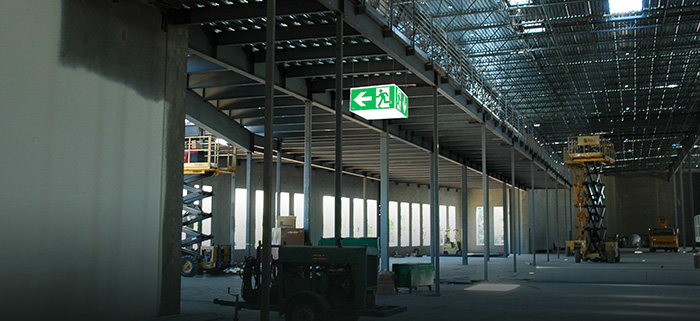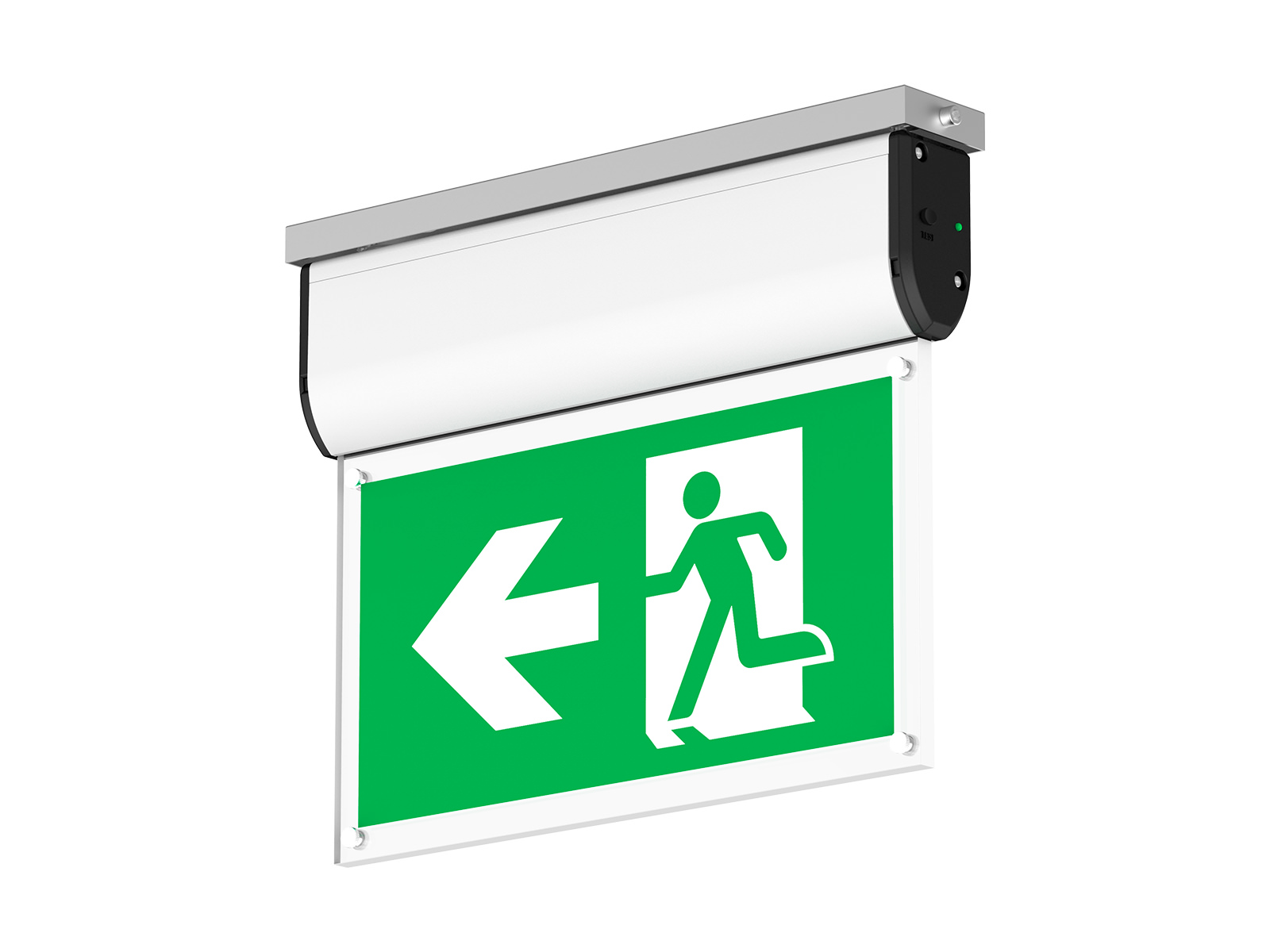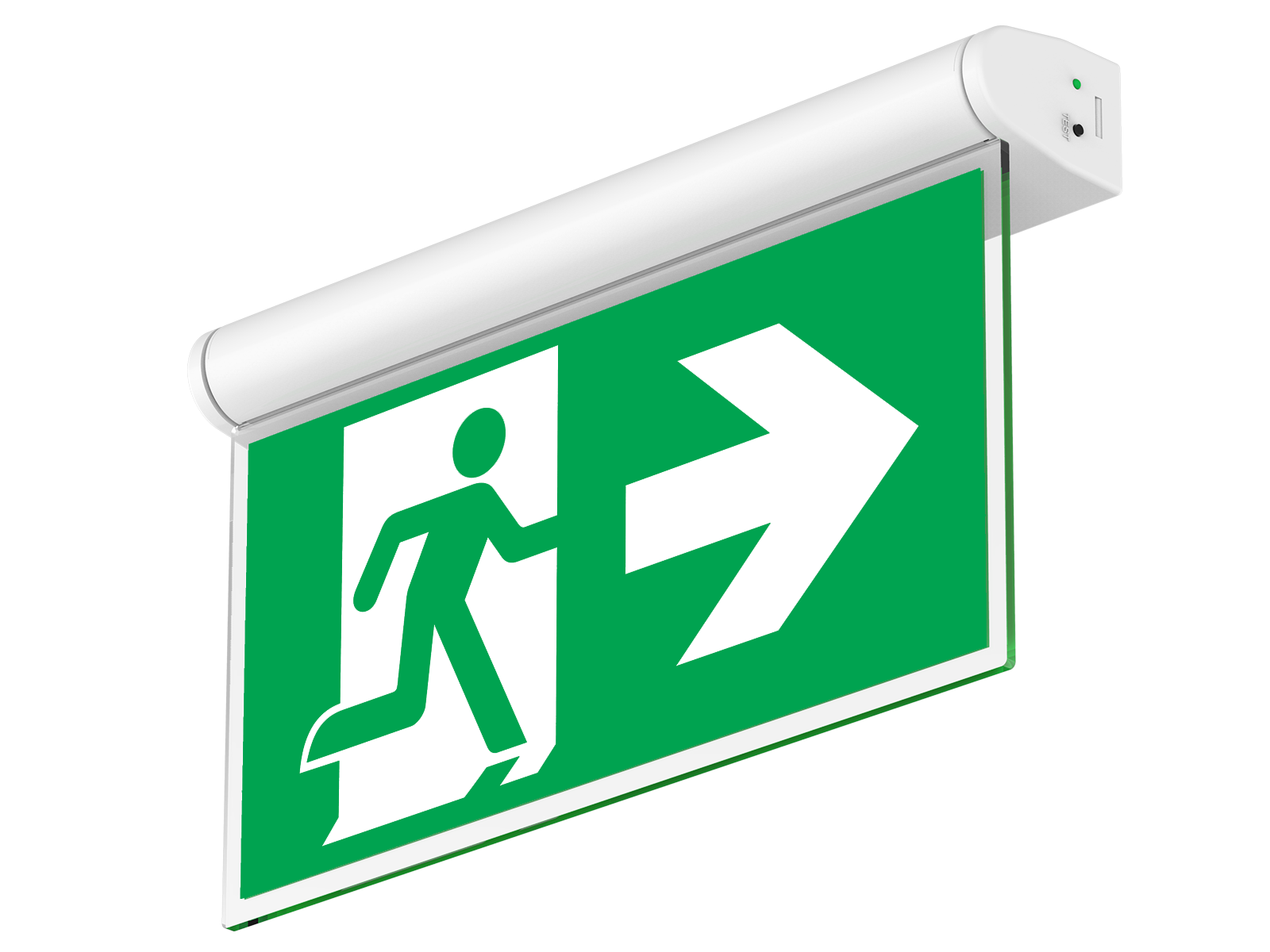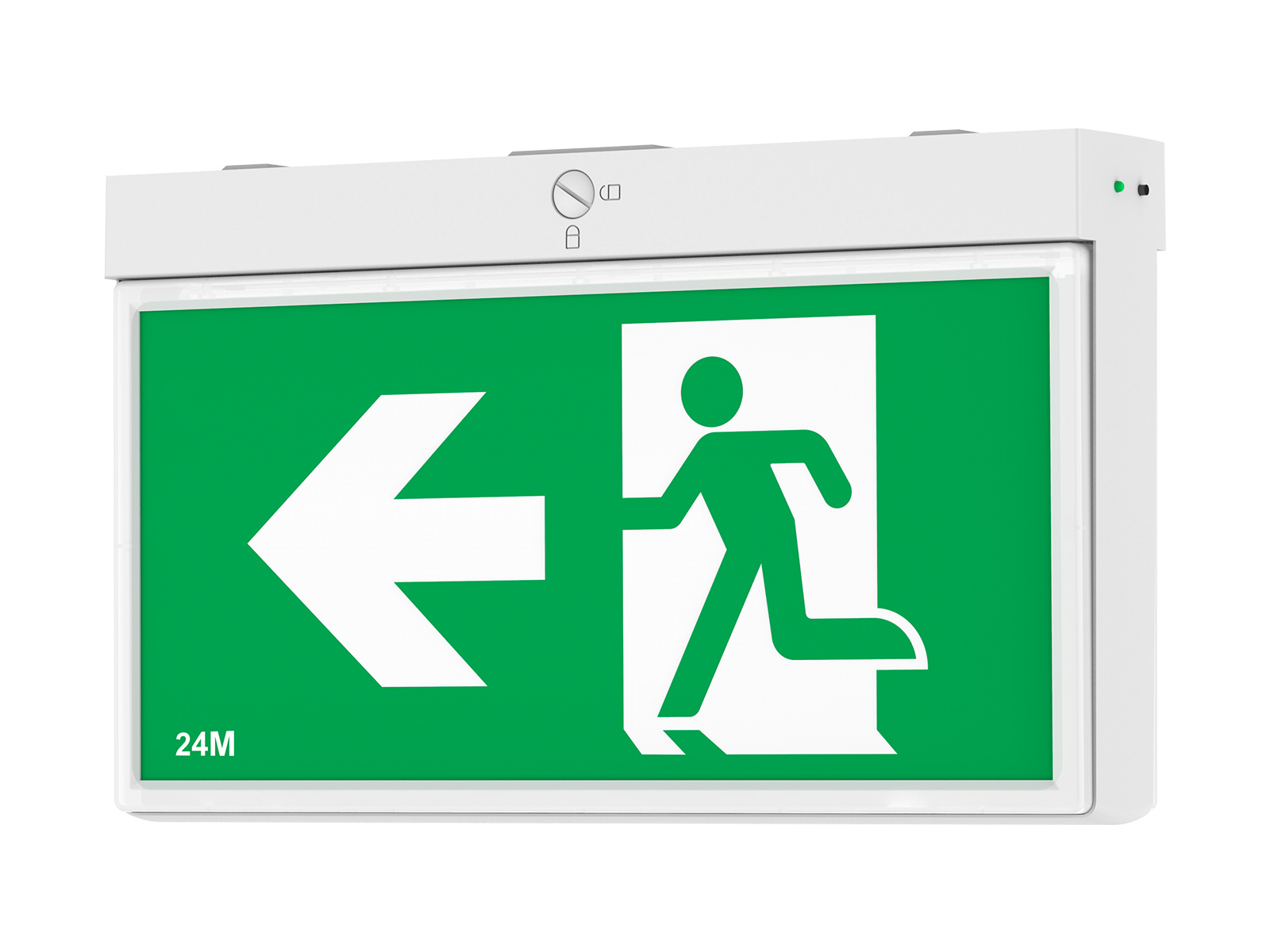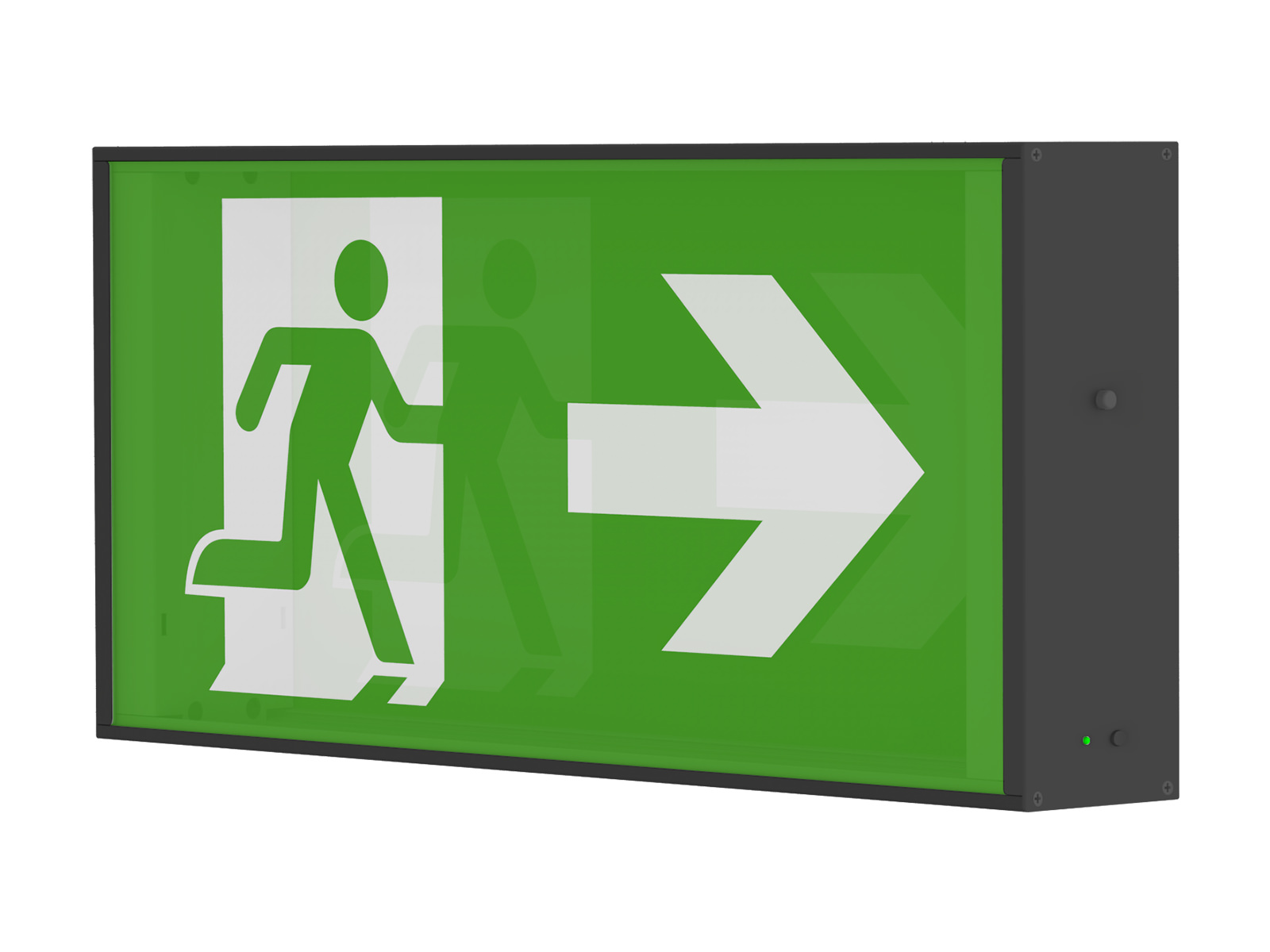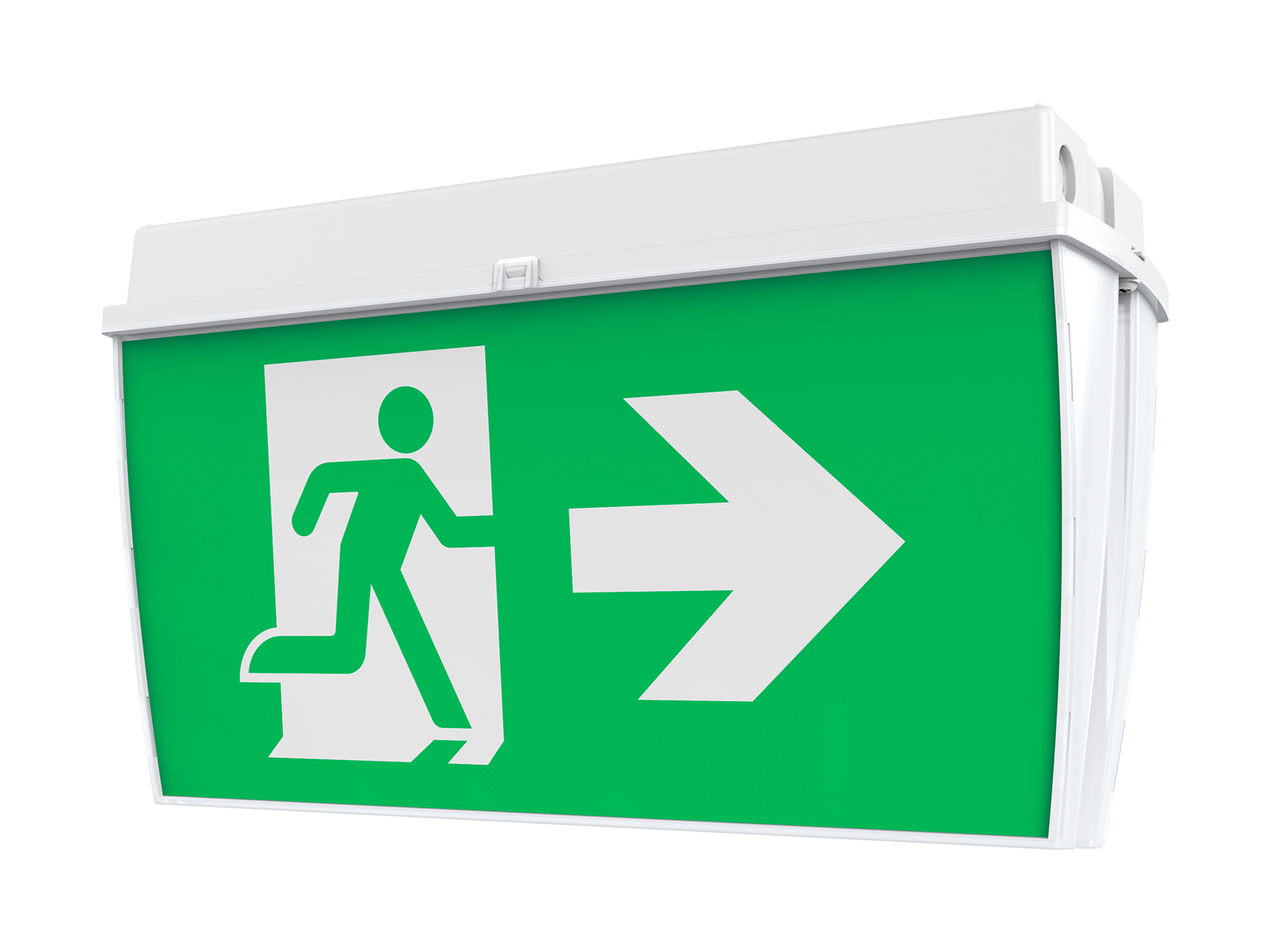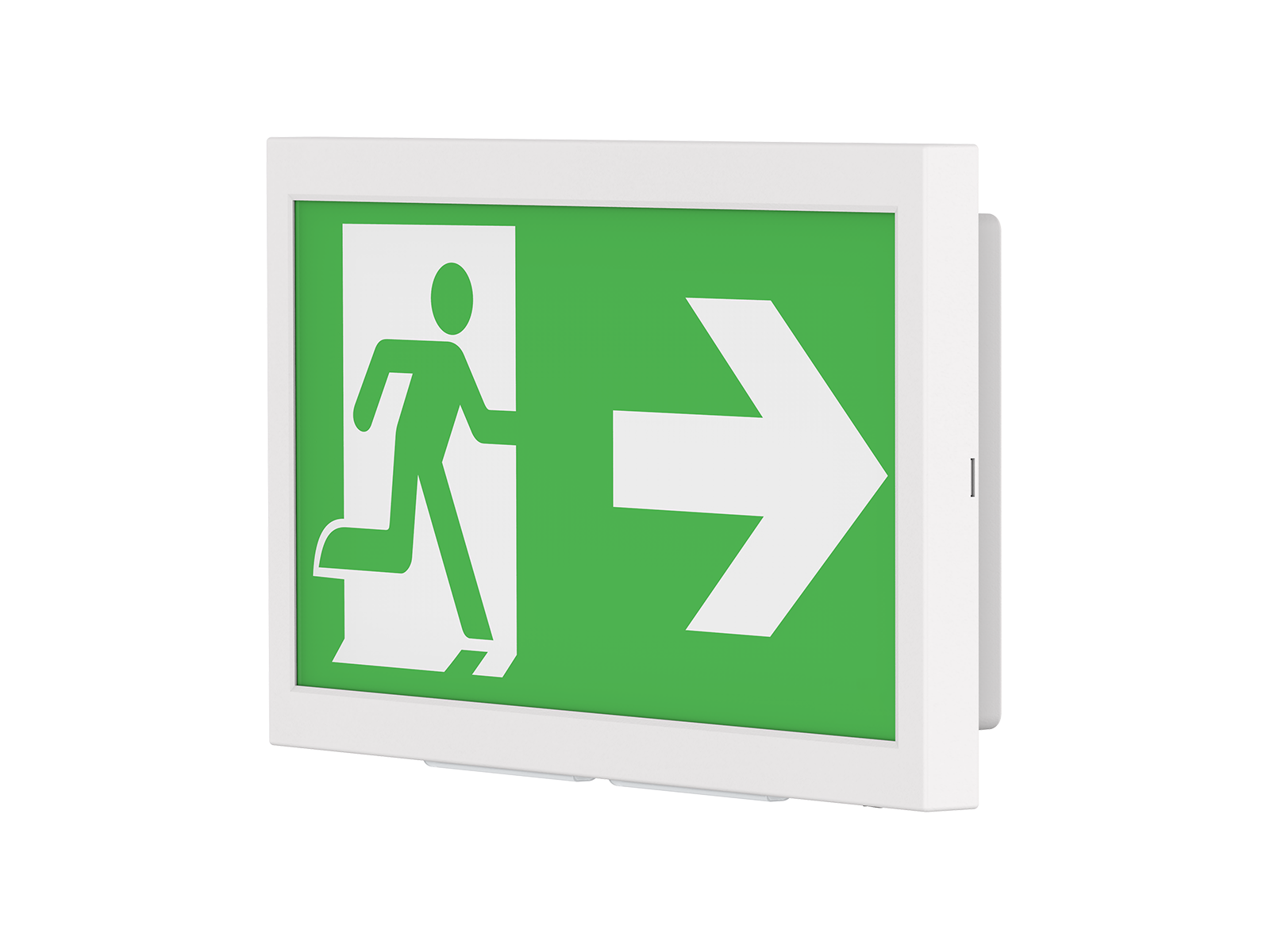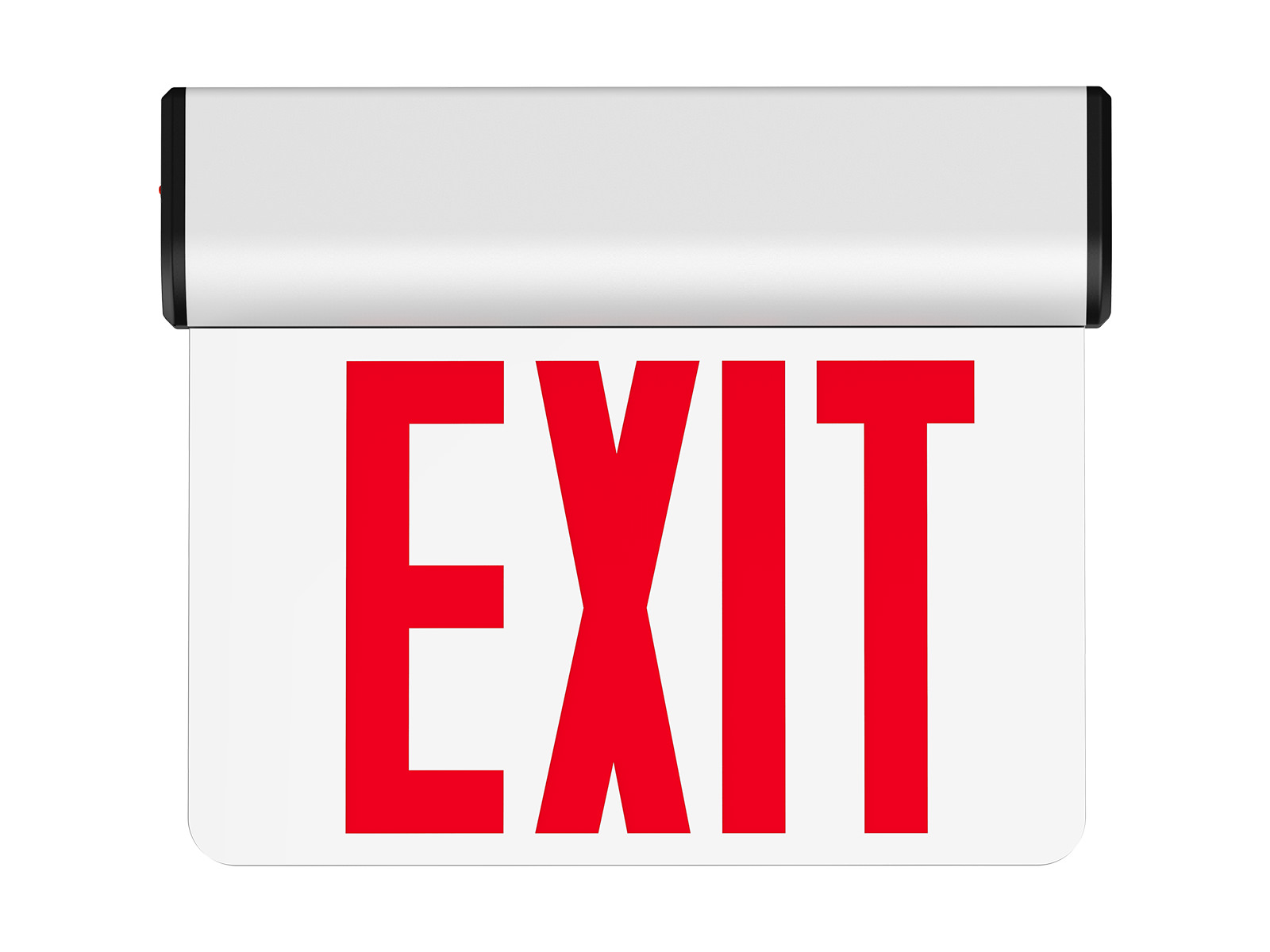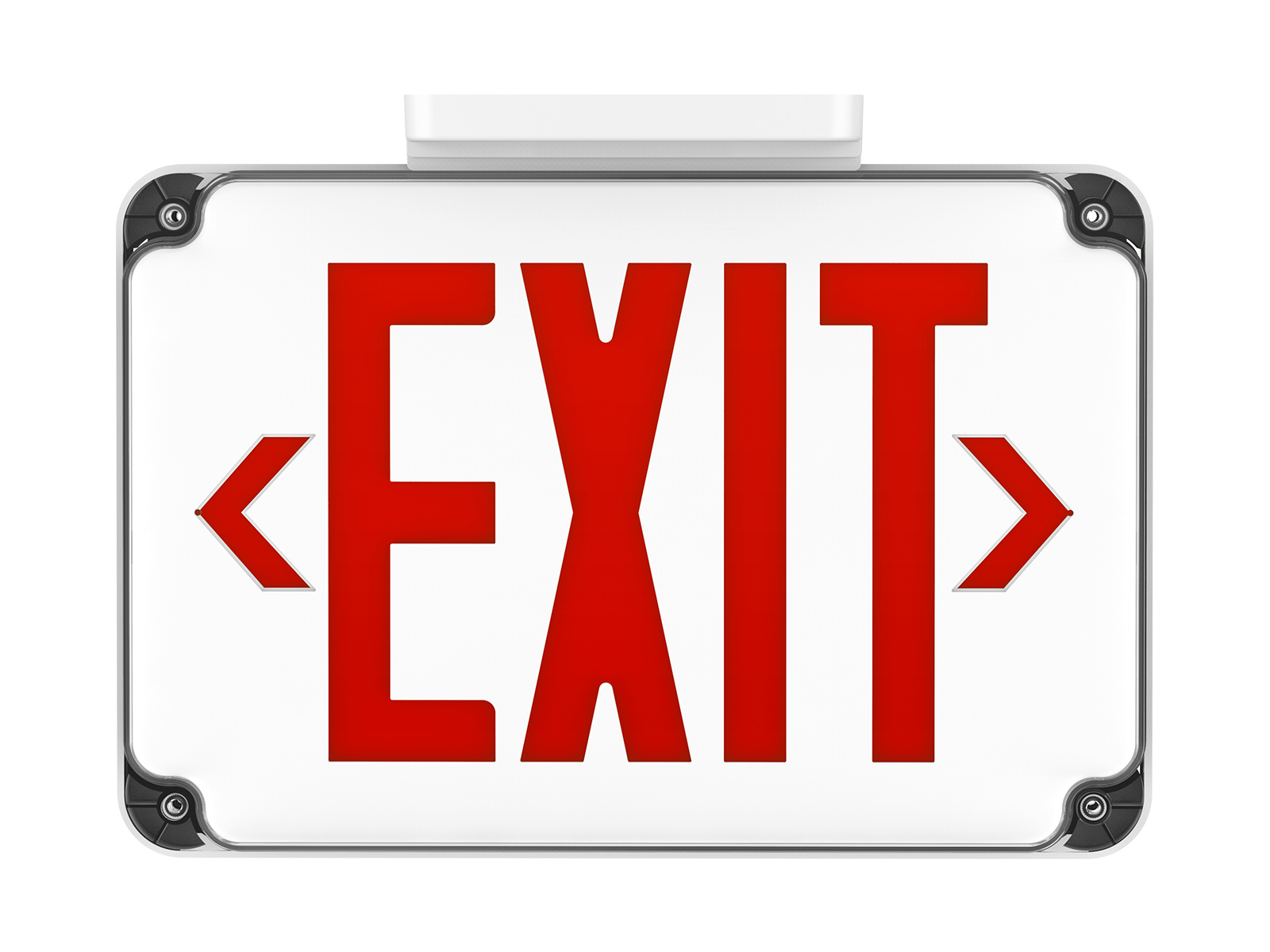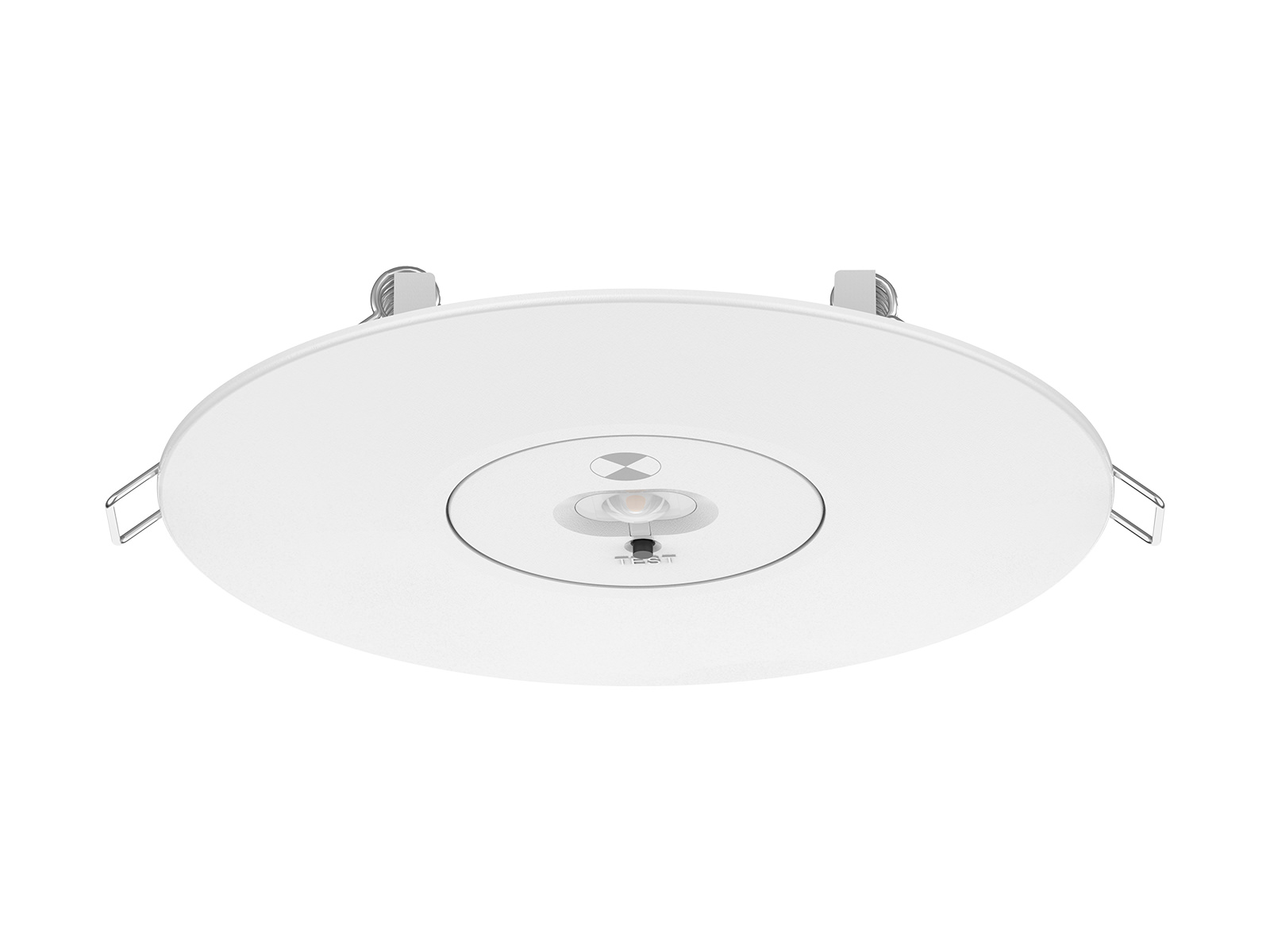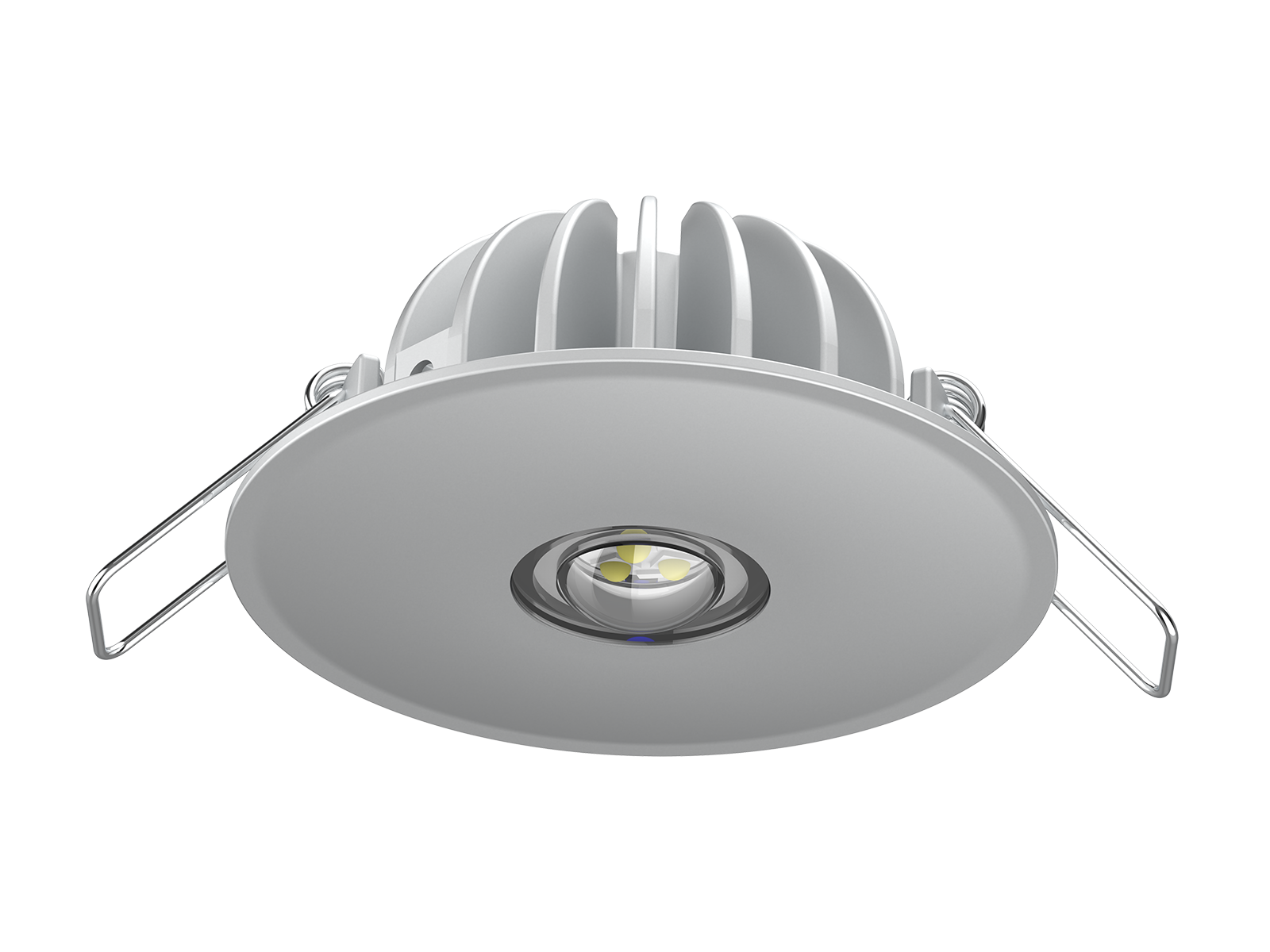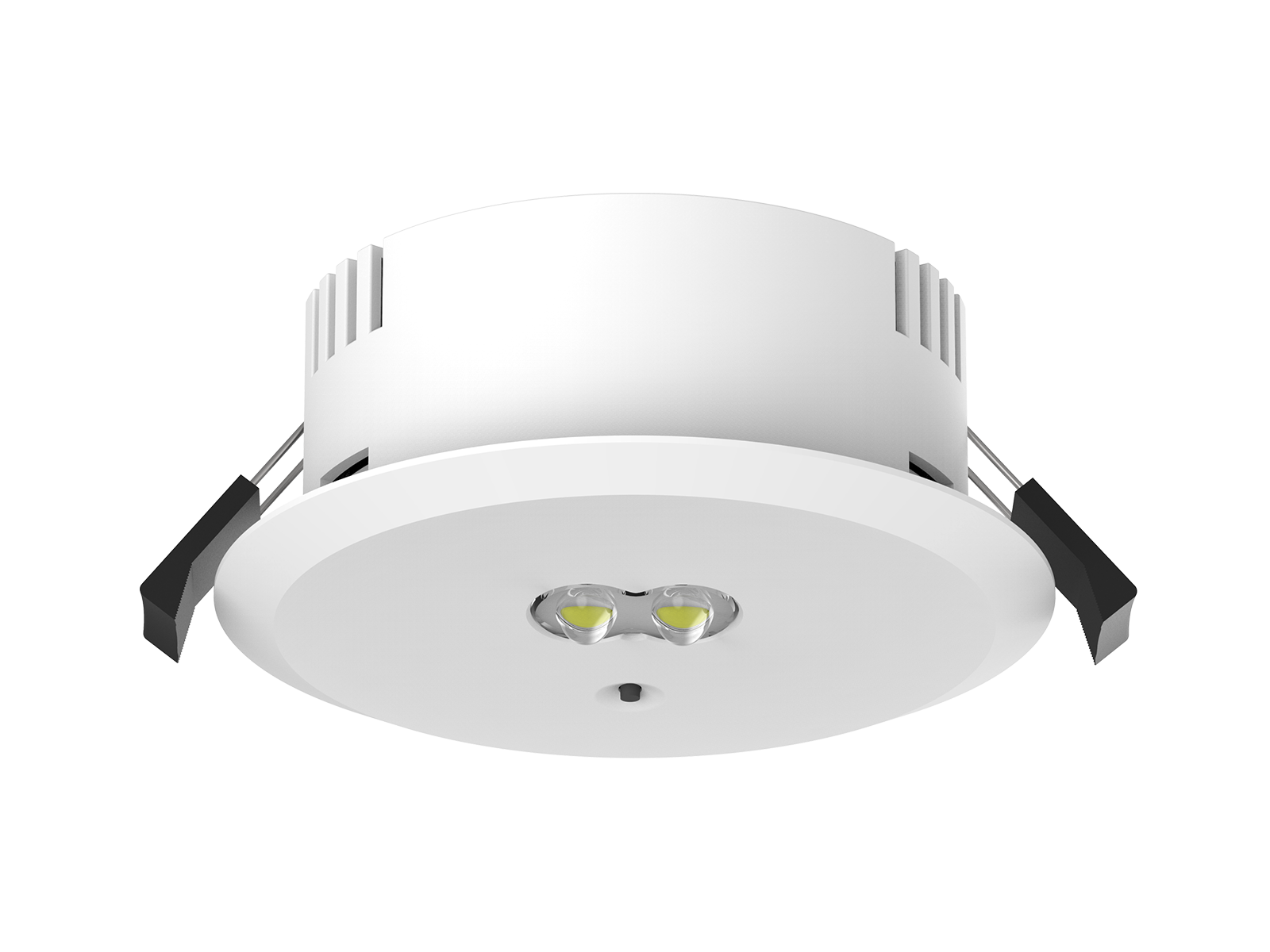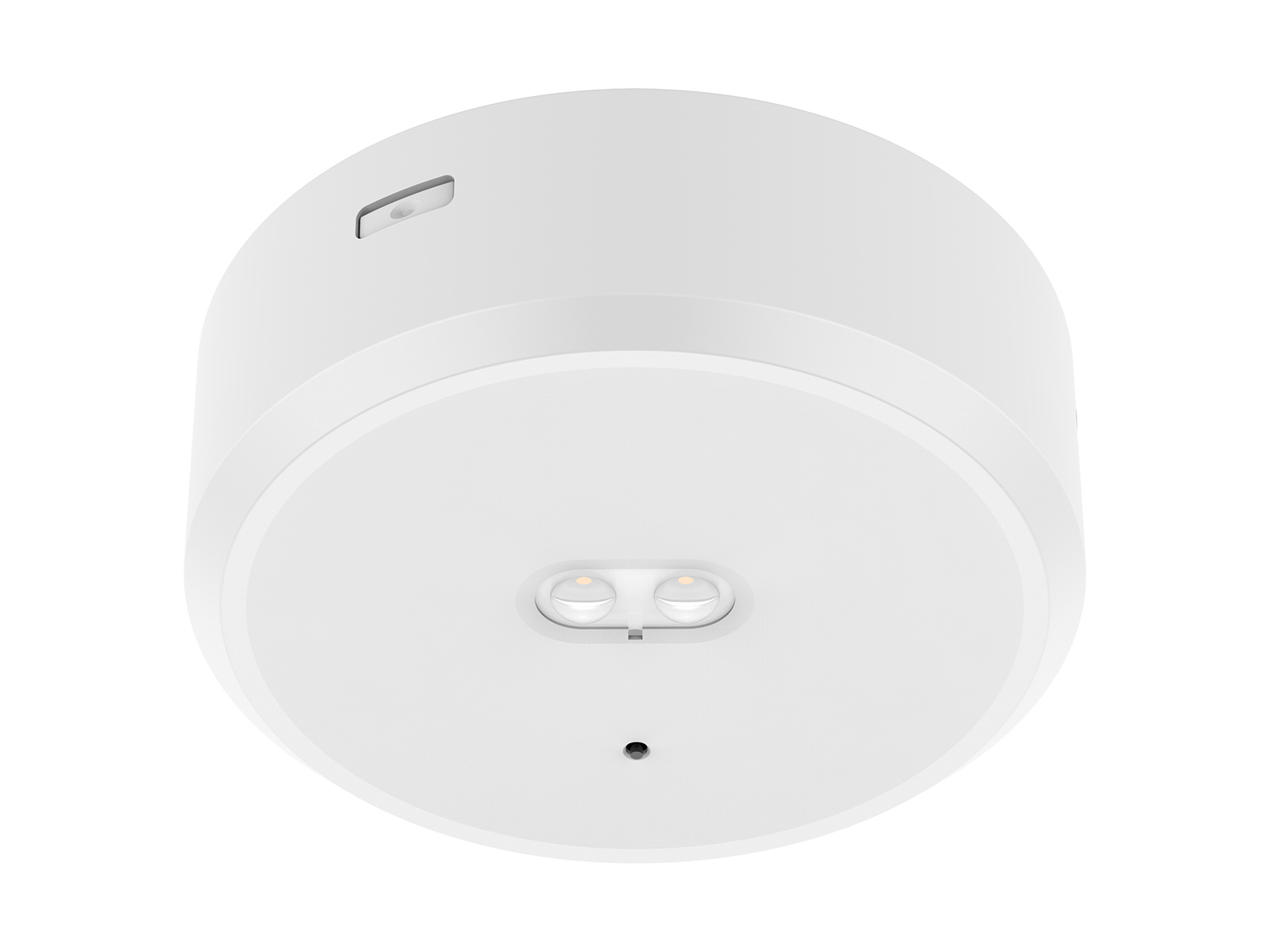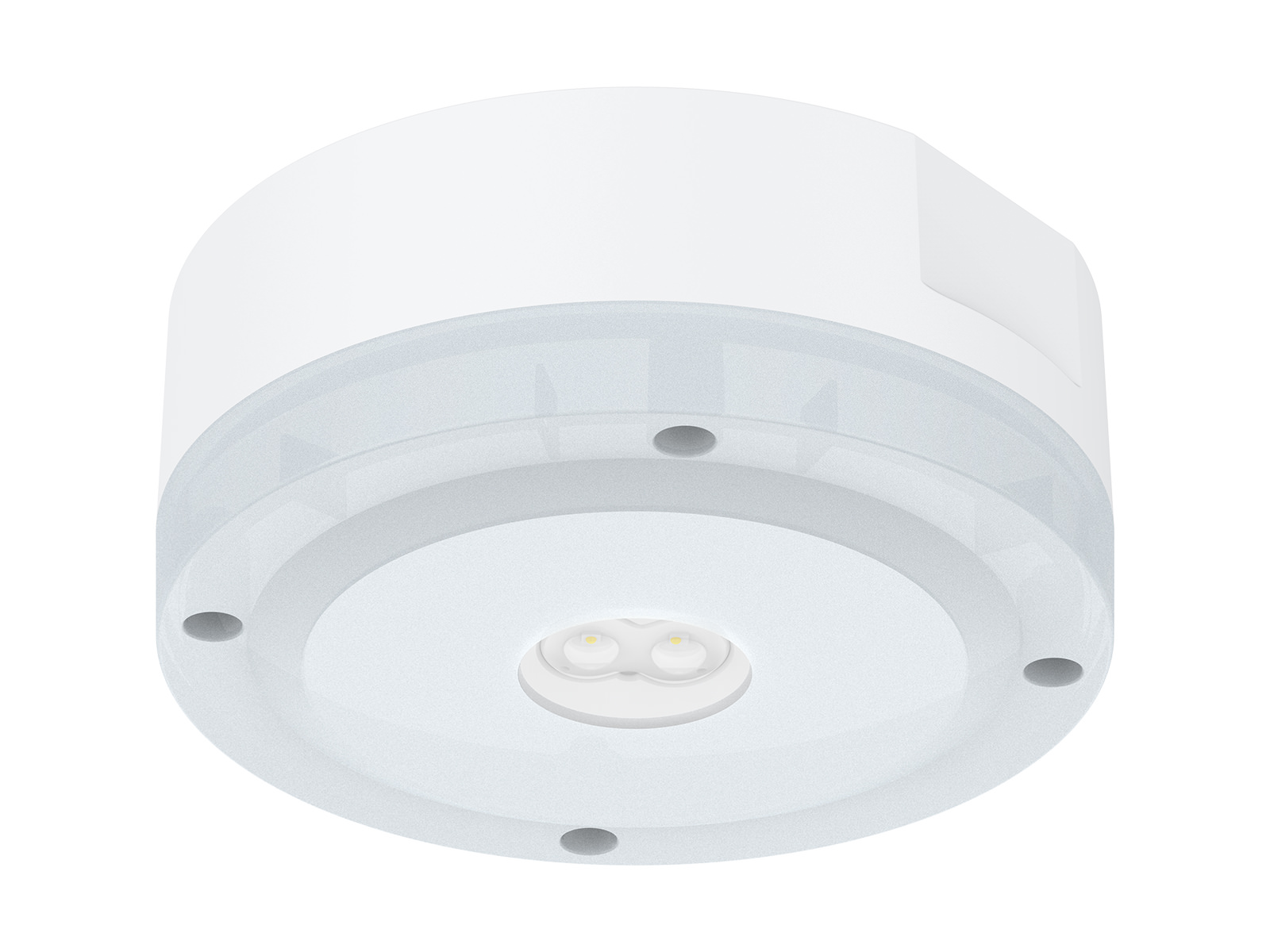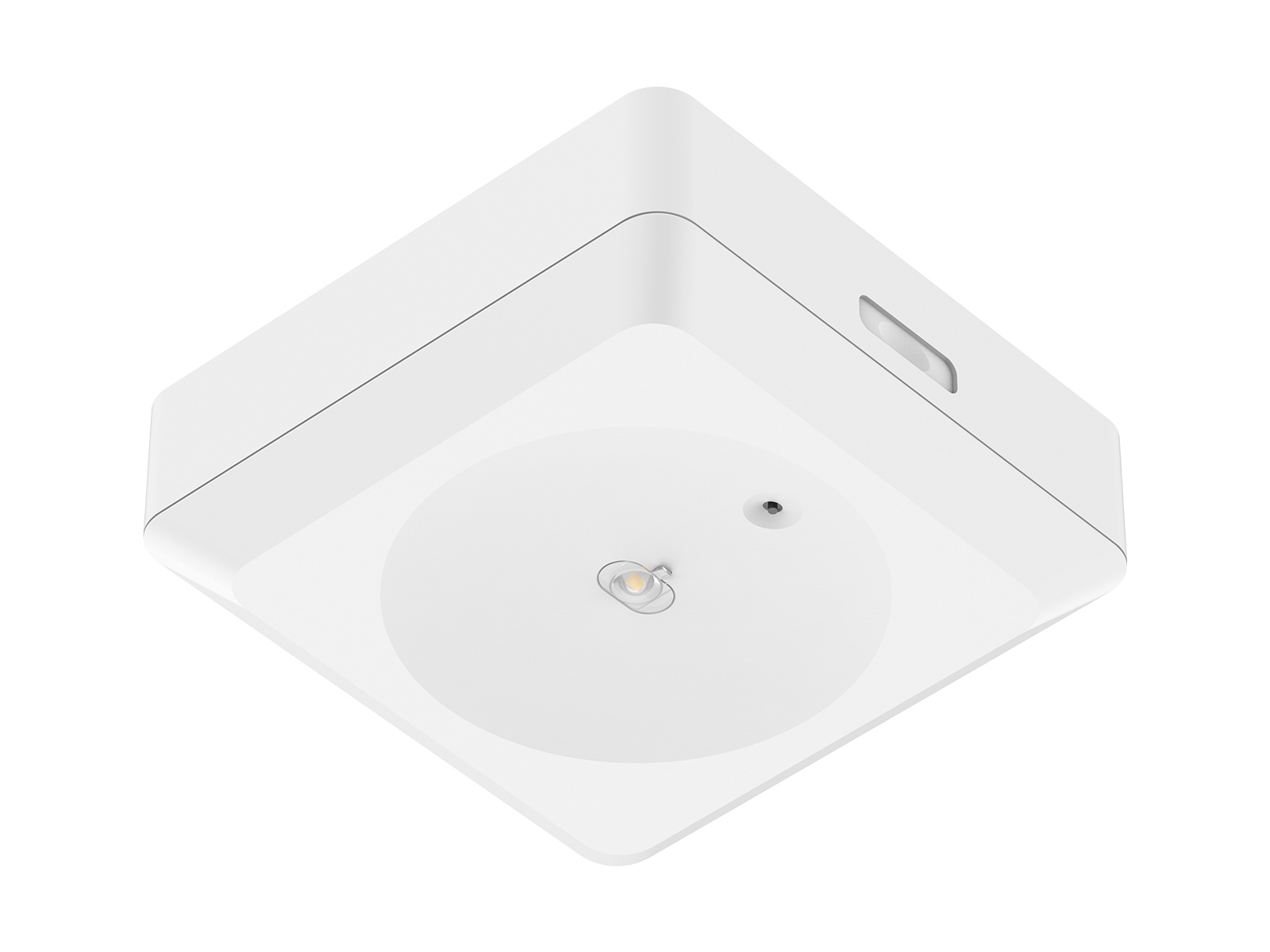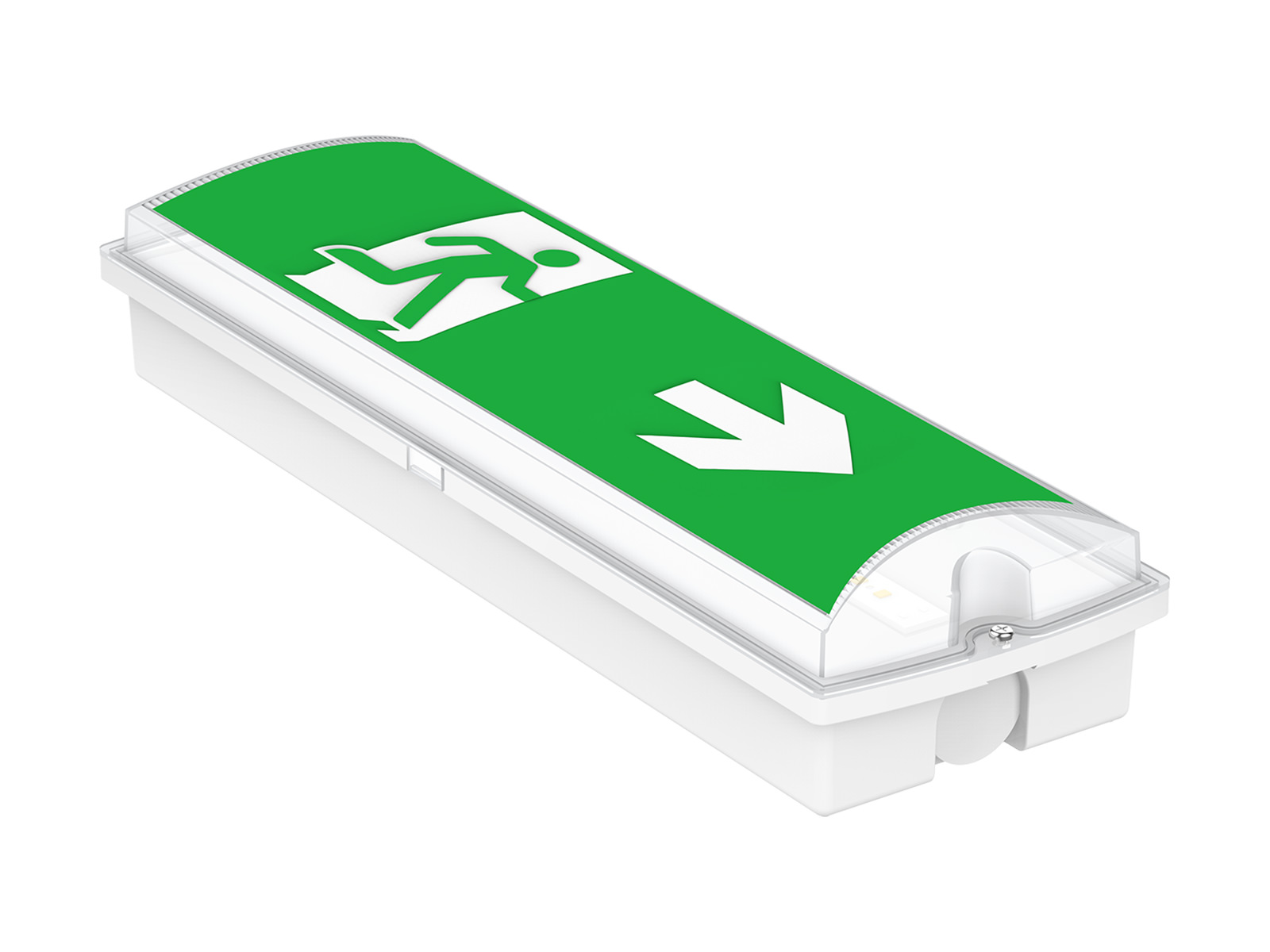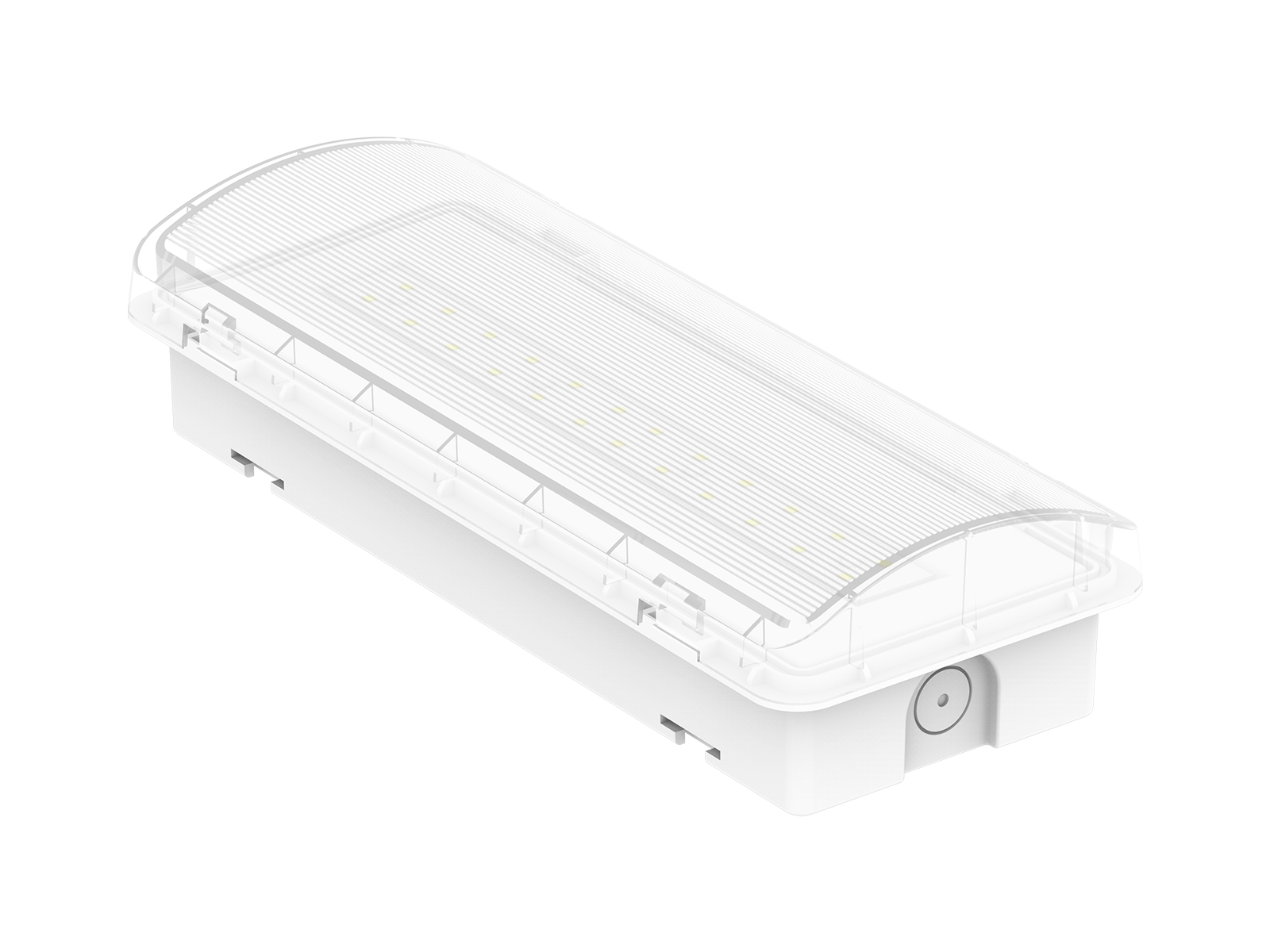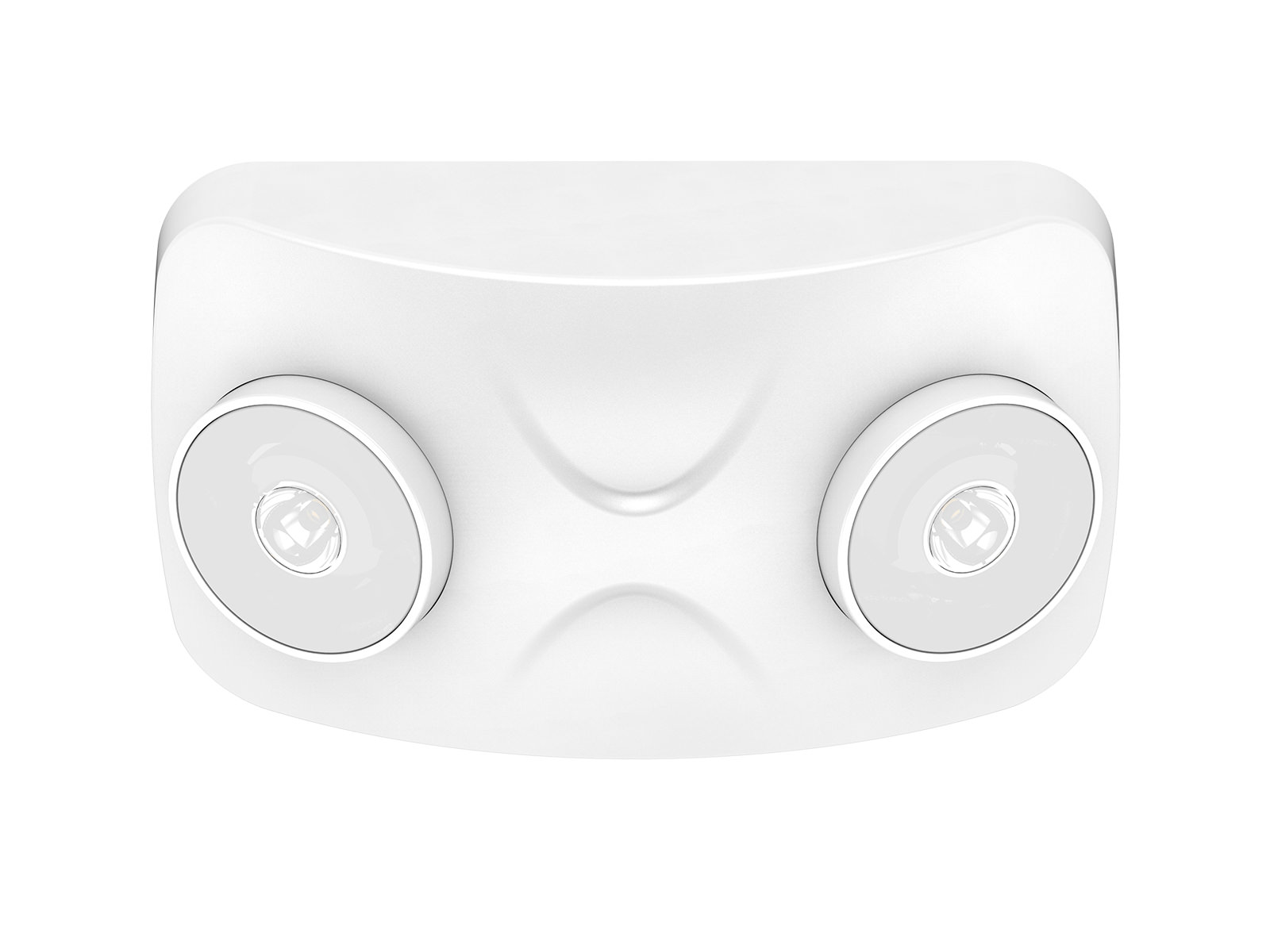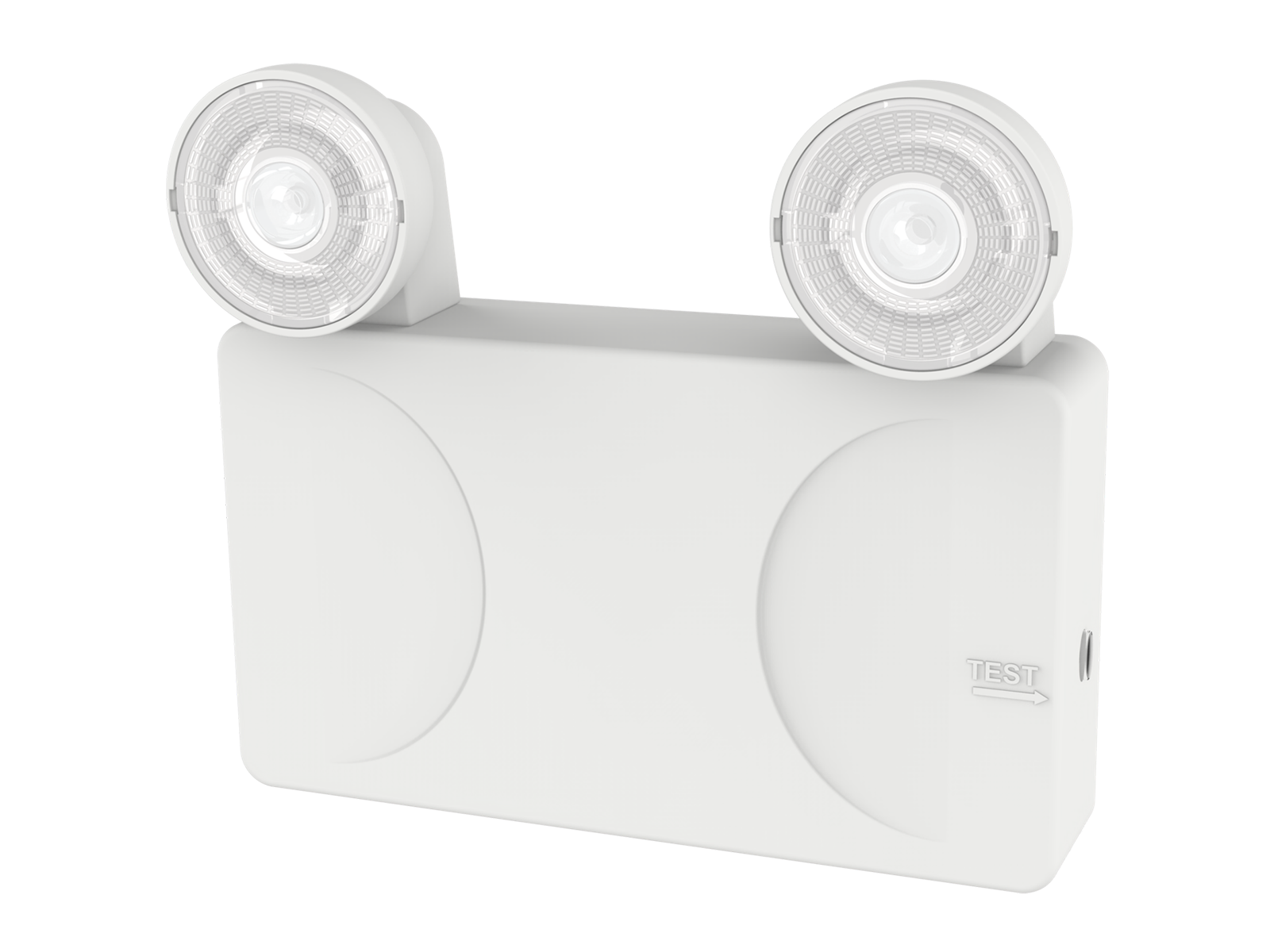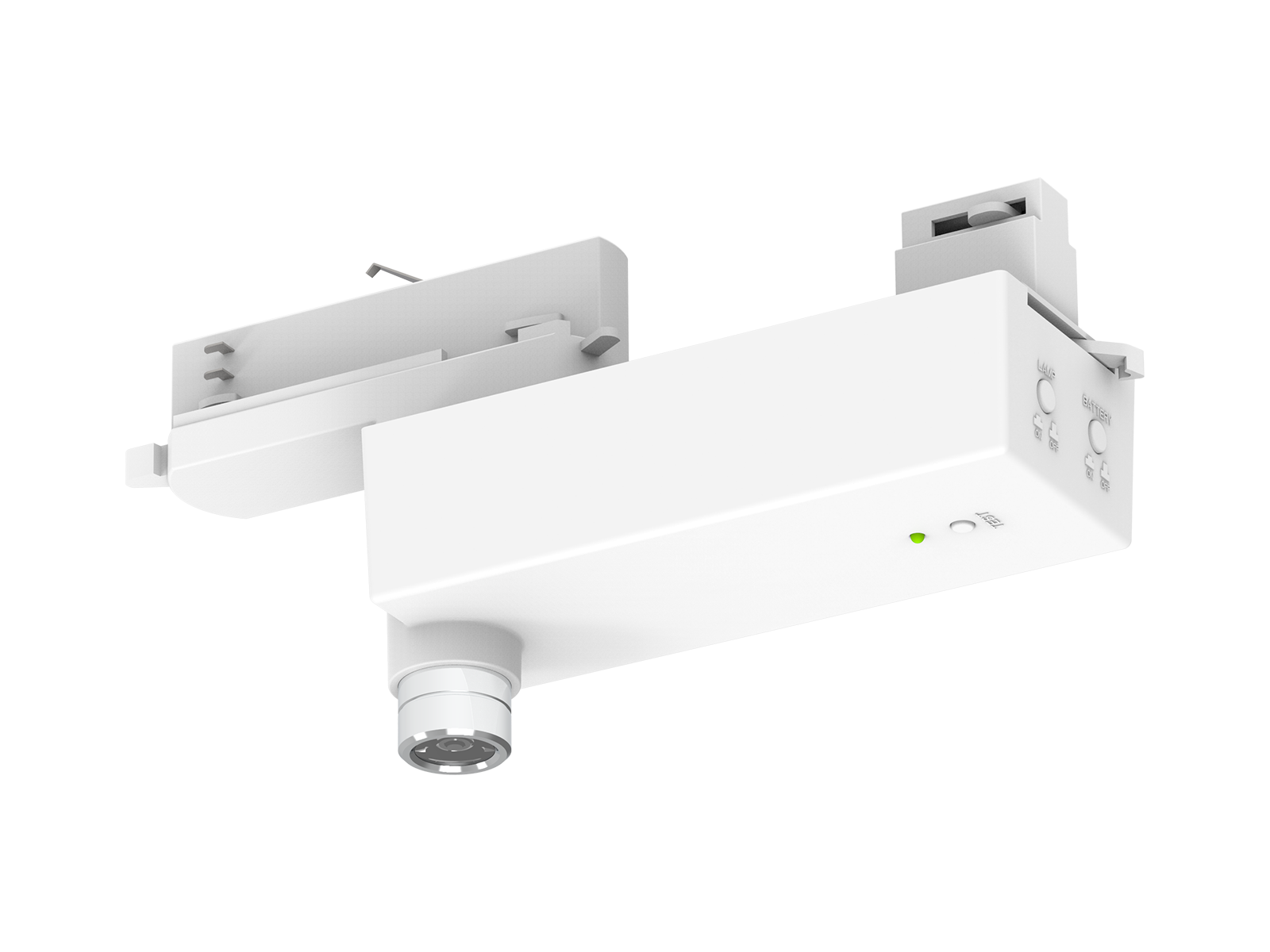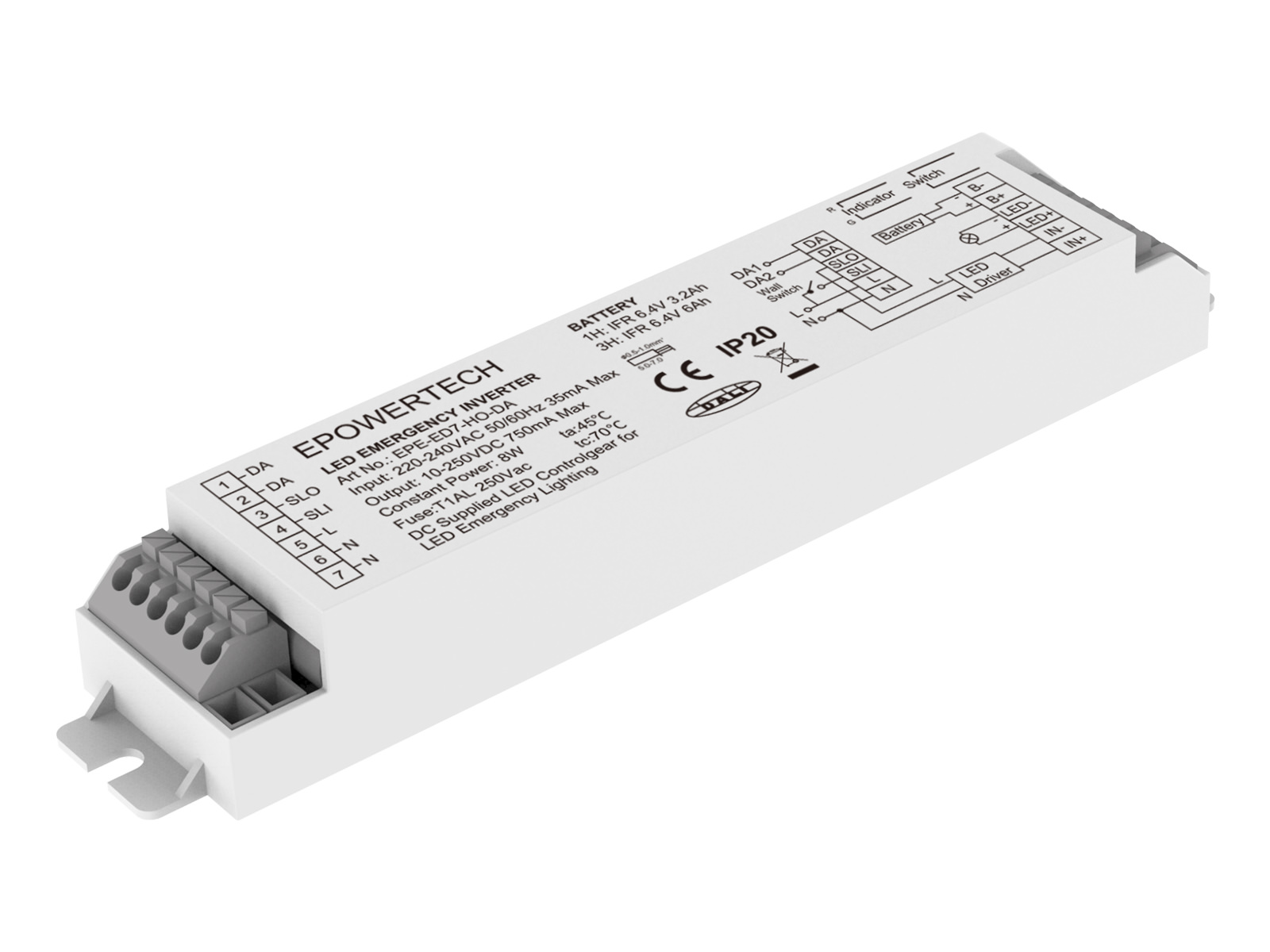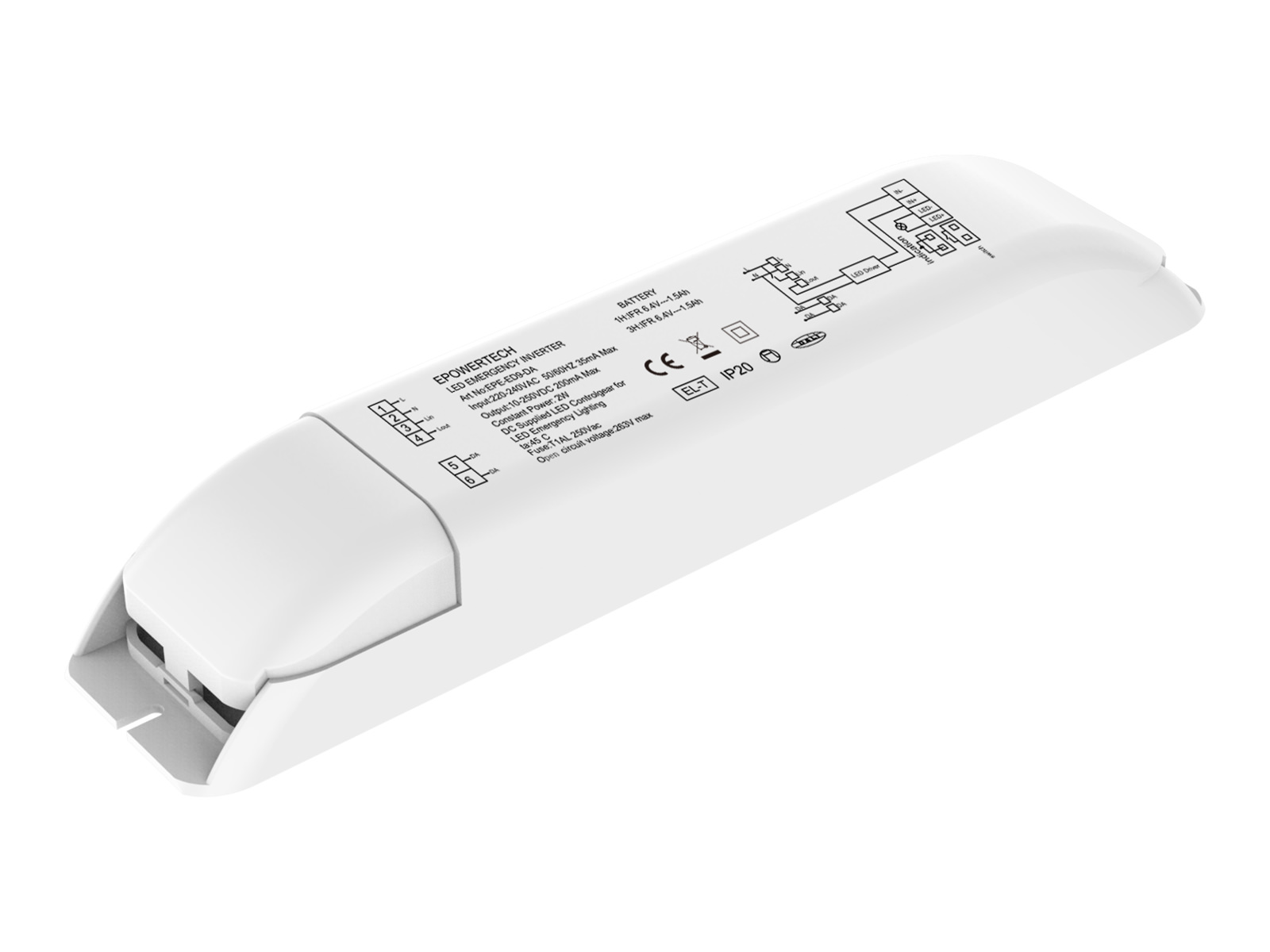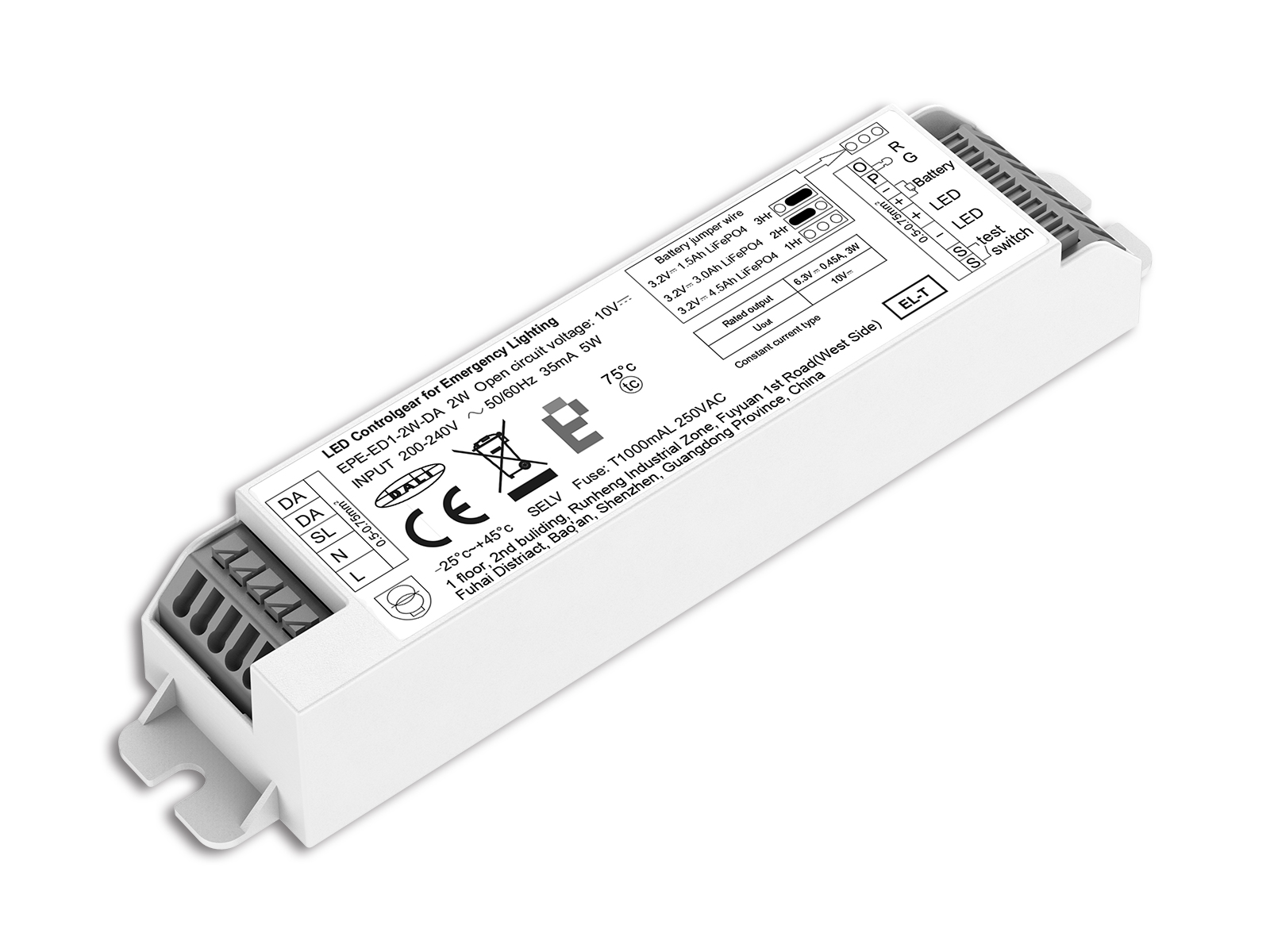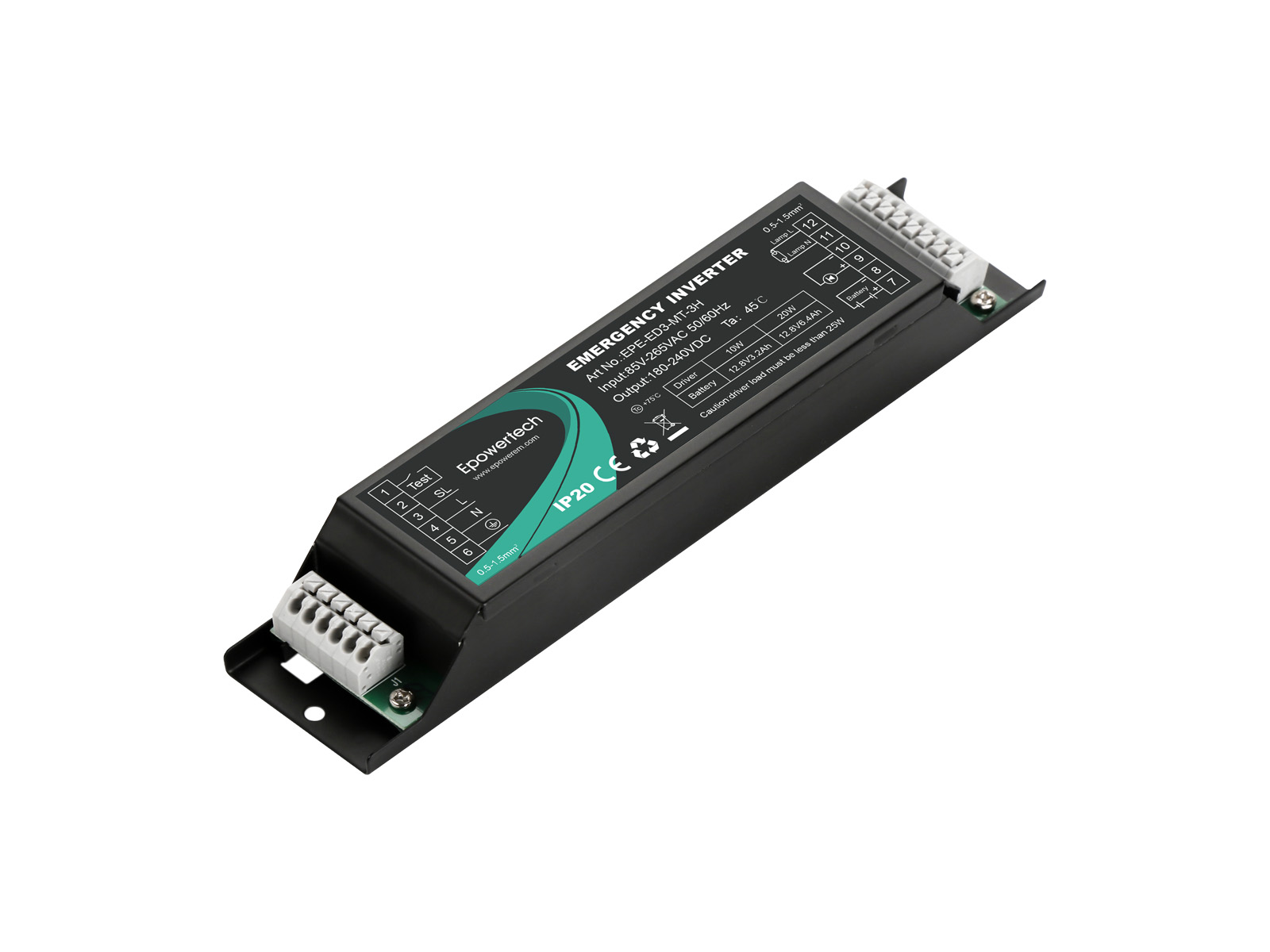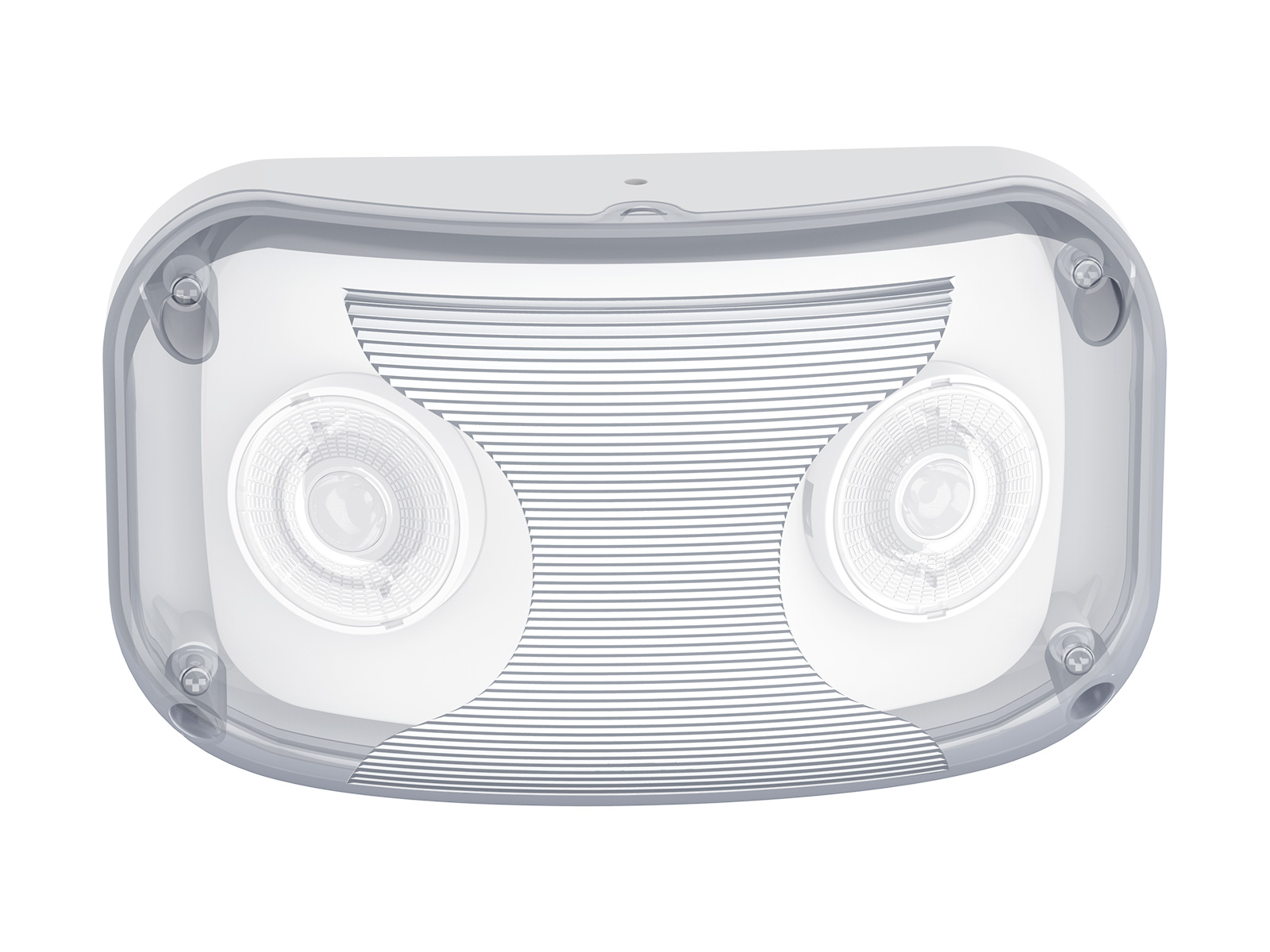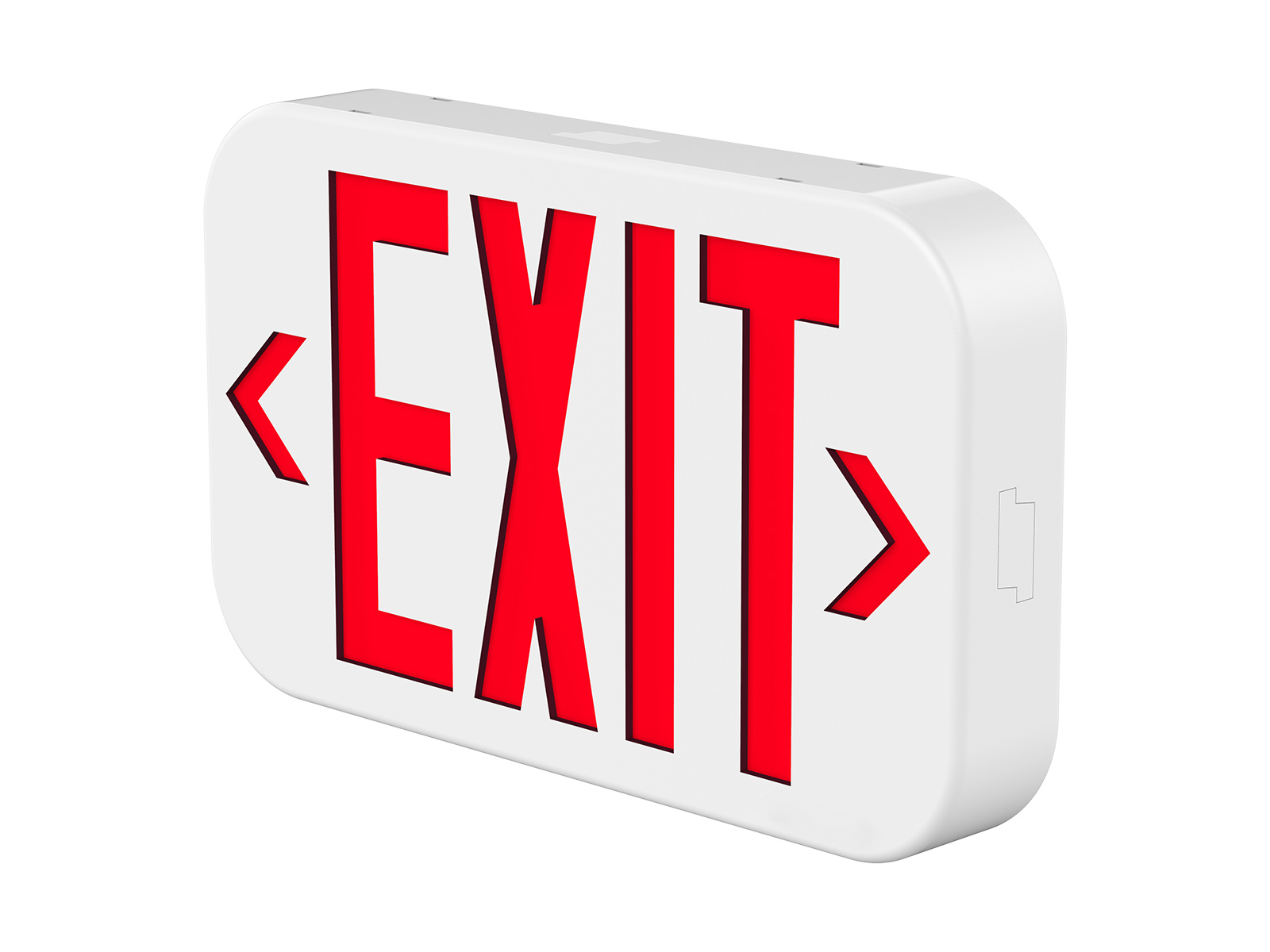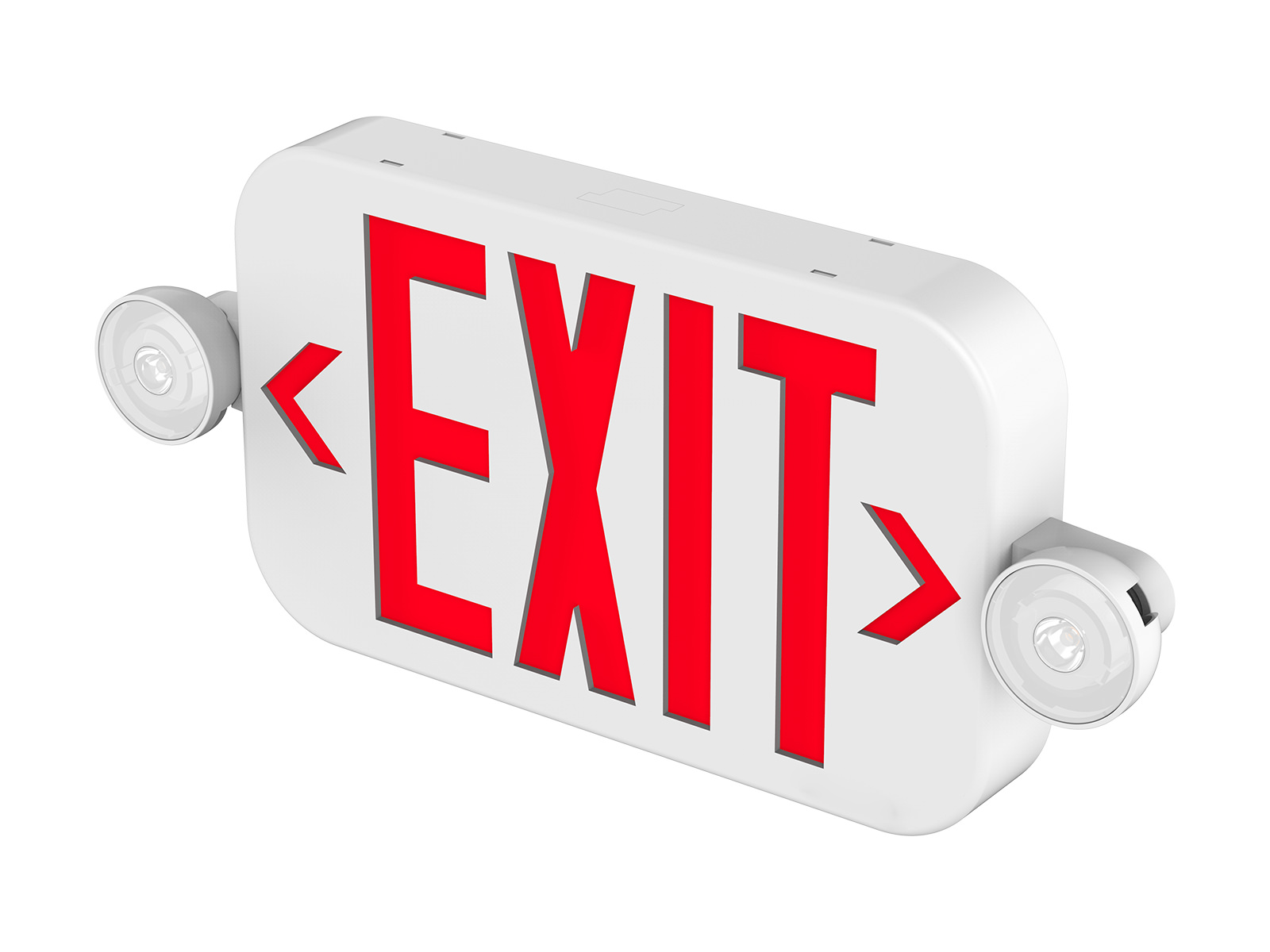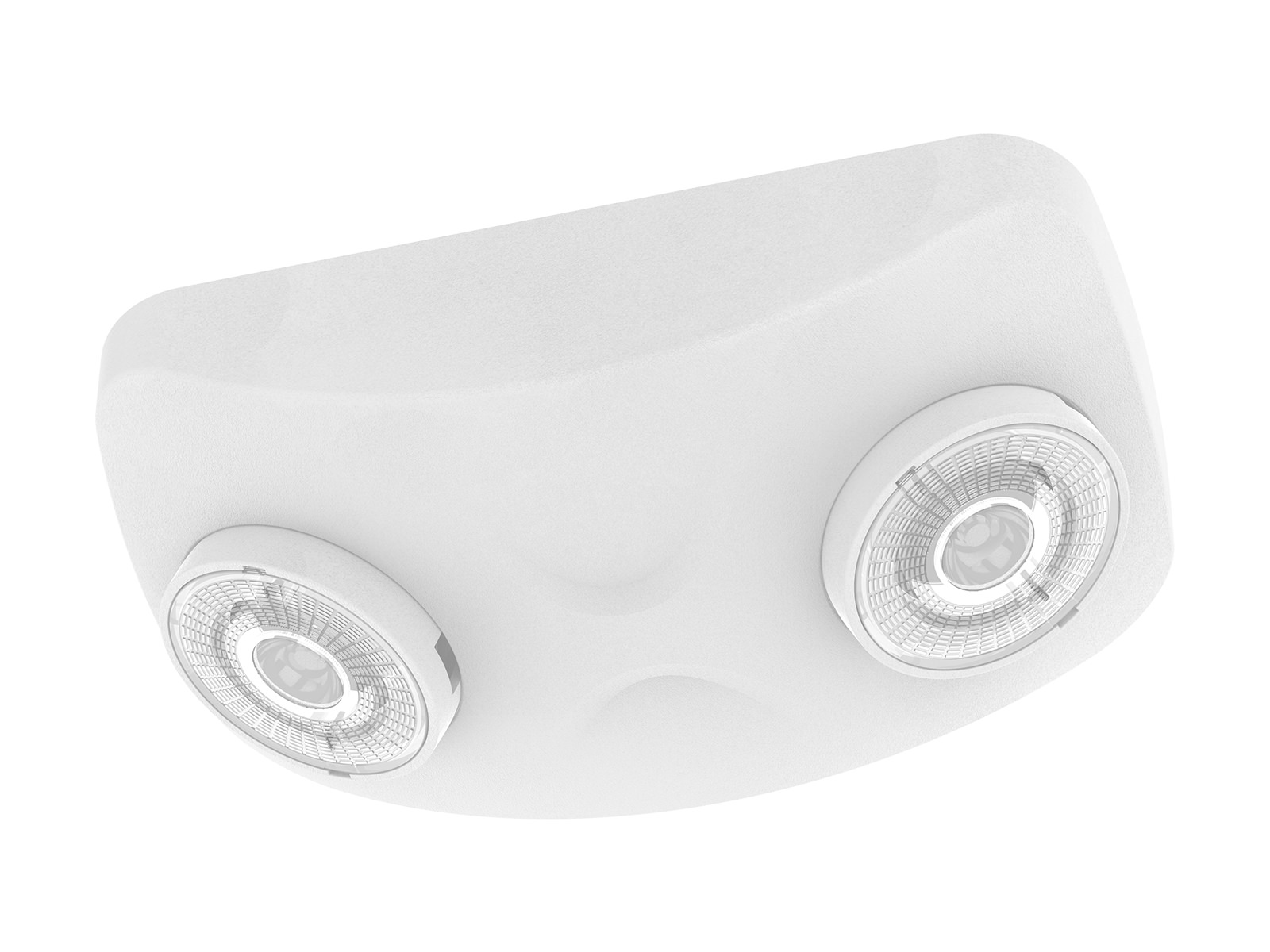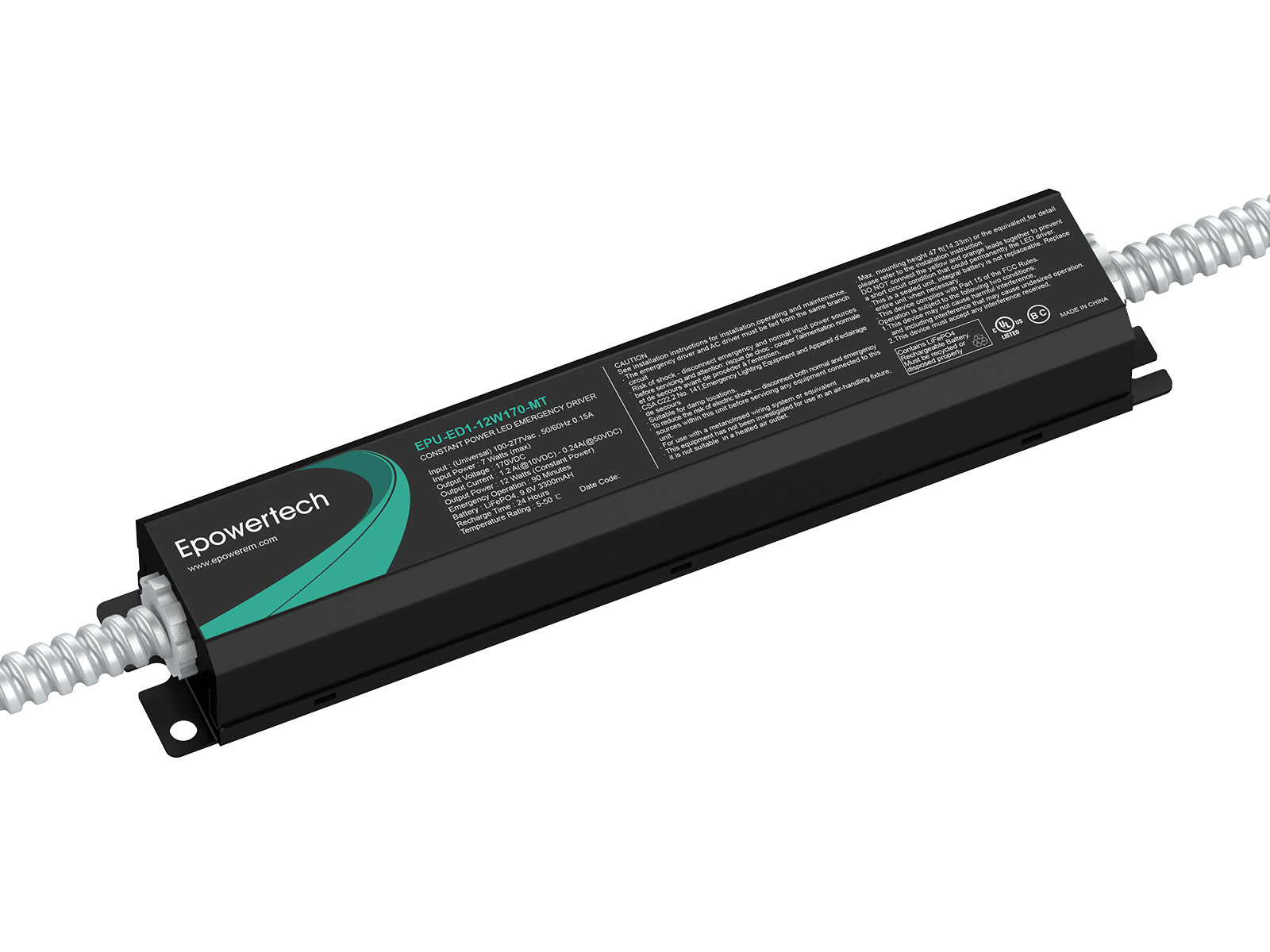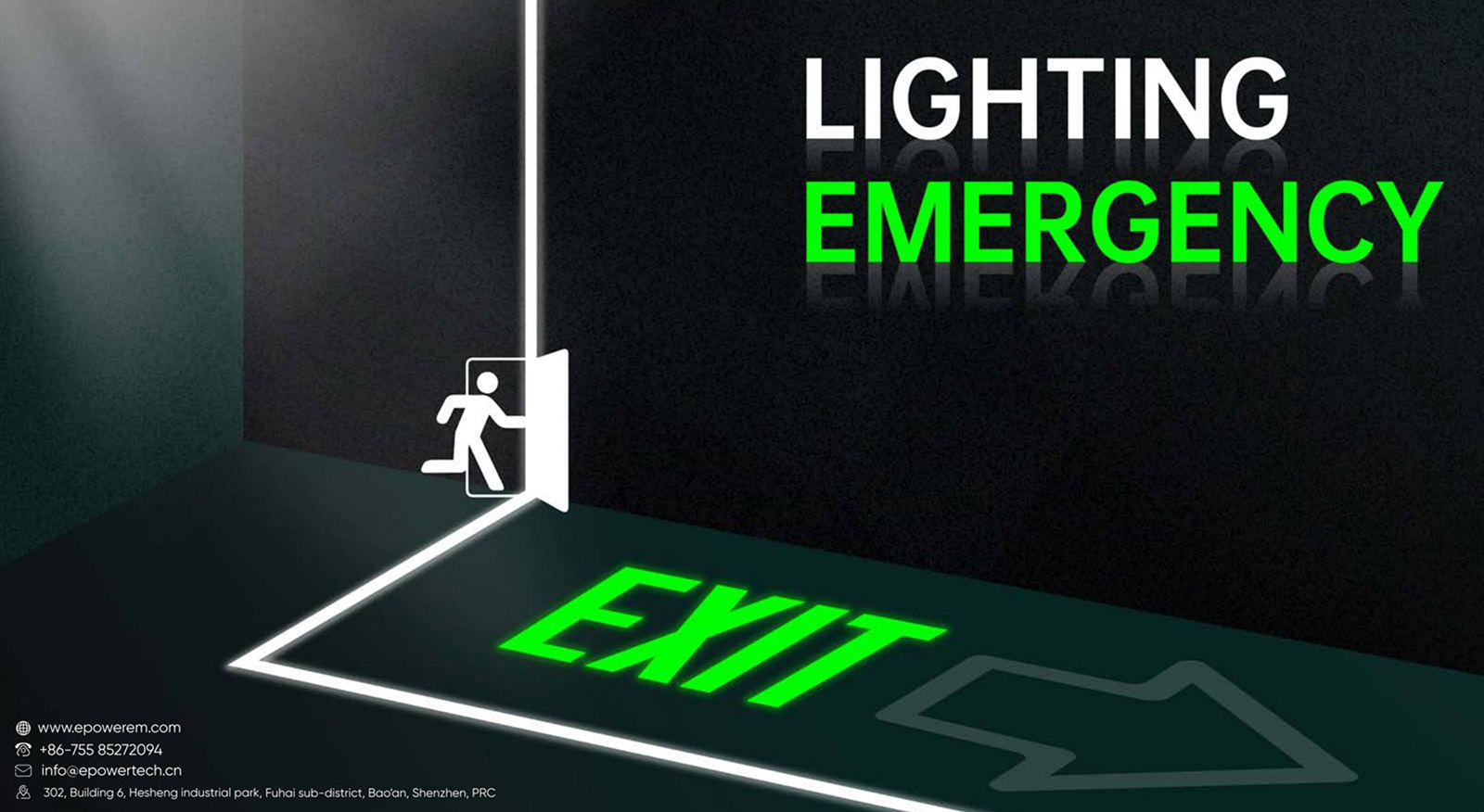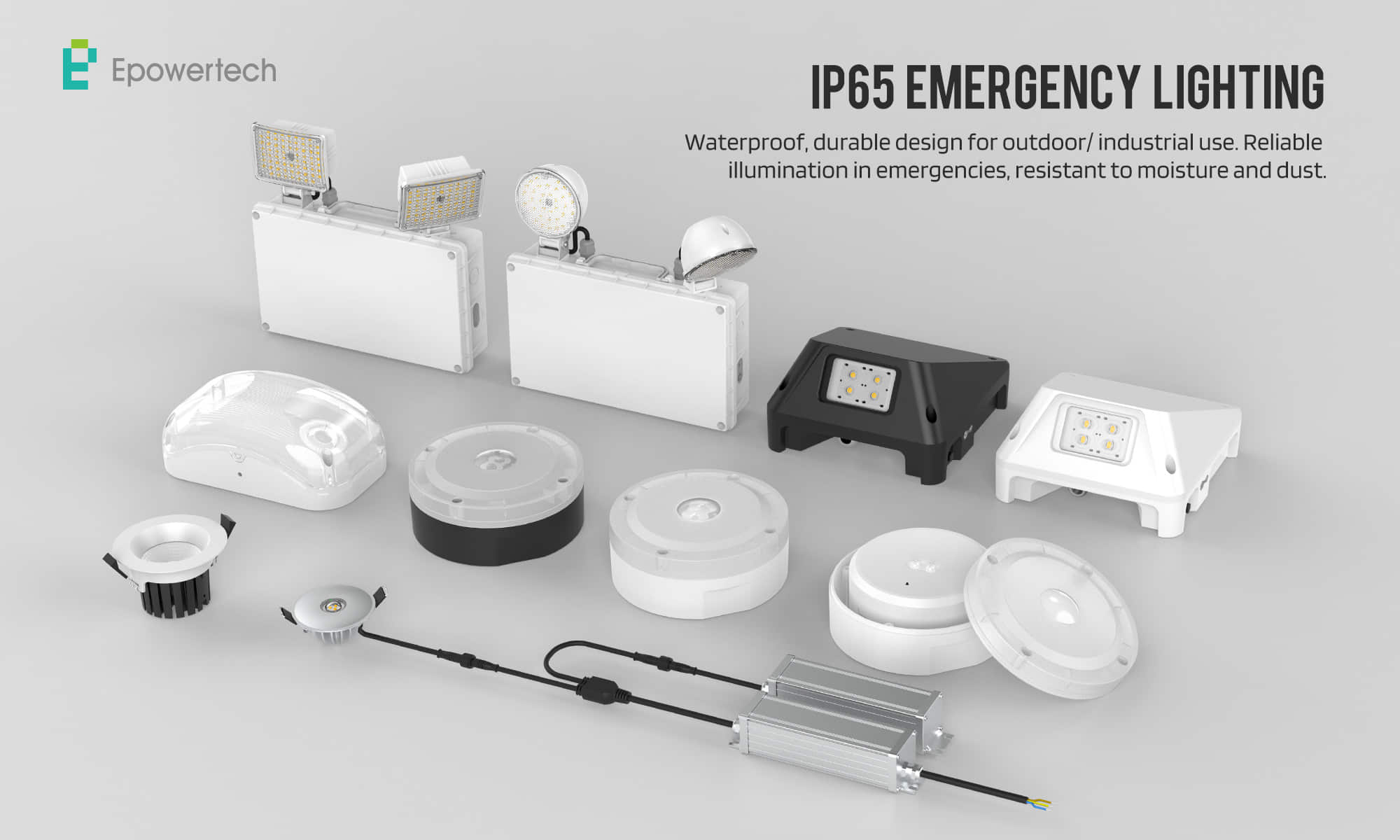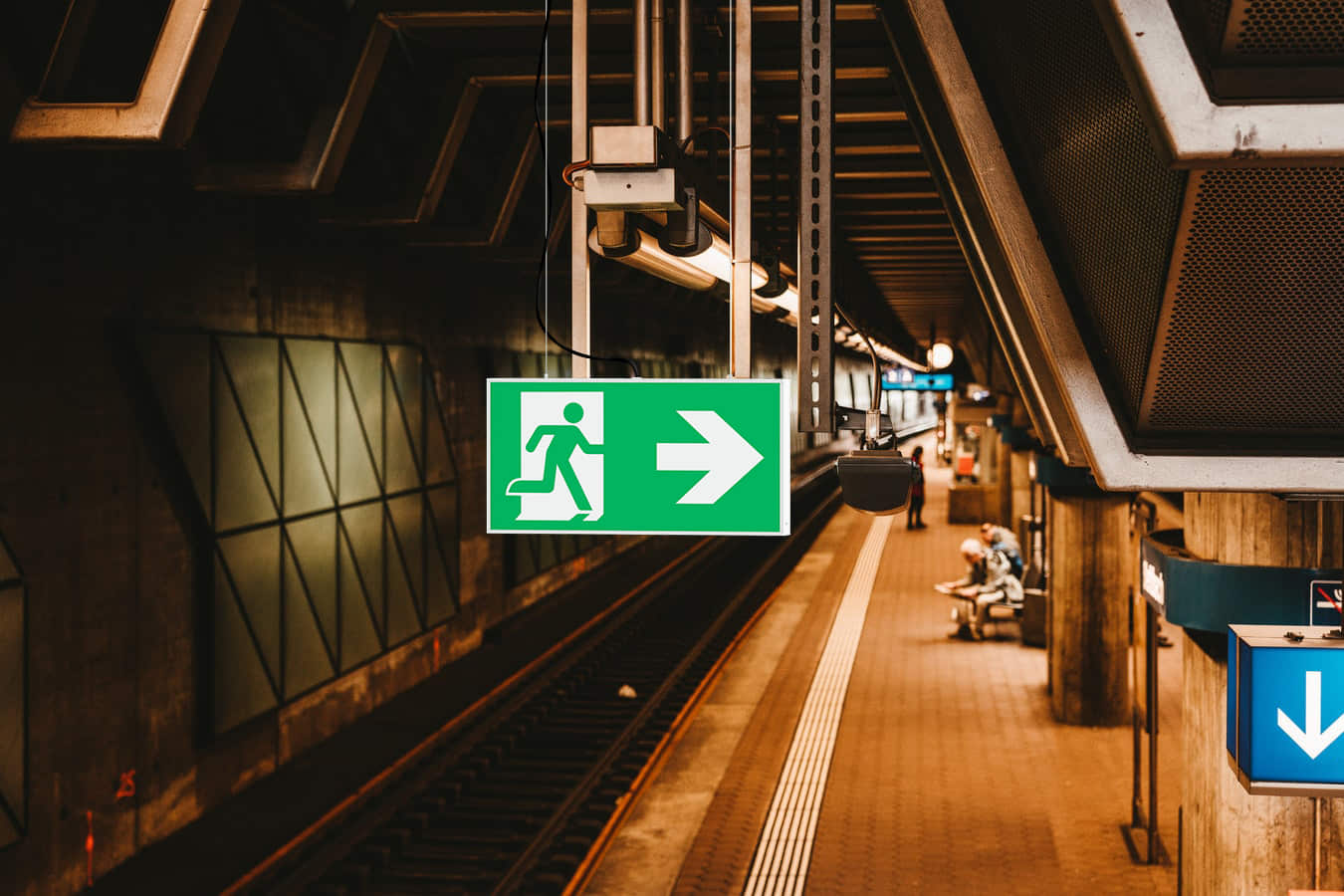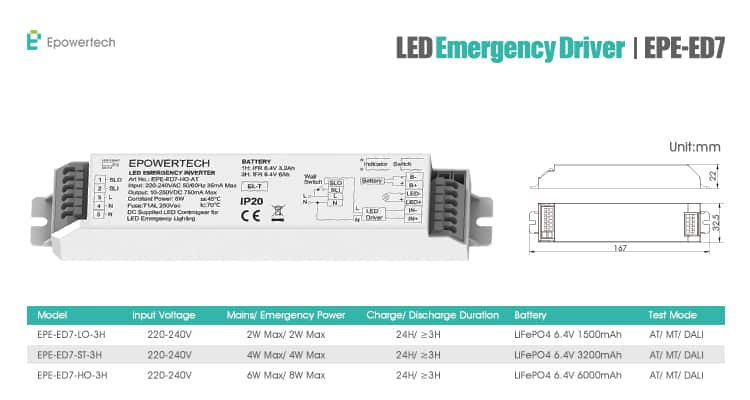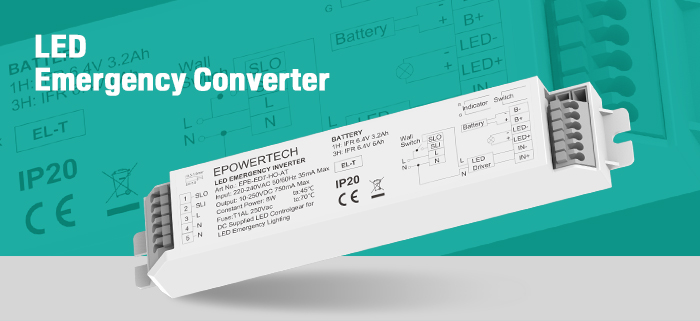Emergency lighting and led exit signs are required in certain areas, buildings and complexes.
Premises include restaurants, bars, recreational facilities and, in general, anywhere over 100 people can gather, including:
Gyms and other sports facilities, education centres and shops.
Whatever the facility, the evacuation routes need to be suitably illuminated. There must also be suitable lighting in one or more areas where people can escape in an emergency.
Building used by public
All buildings used by the public are required to have emergency illumination systems. Some examples include schools, libraries and health centres with a capacity in excess of 50 people.
Routes and transit area
Emergency lighting systems also have to be installed along routes and transit areas and along accessible routes. The aim is to avoid crowds from gathering and prevent accidents that could be a safety hazard. Luminaires have to be fitted at least two metres above floor level, above all exit doors and wherever necessary to highlight potential hazards or safety equipment.
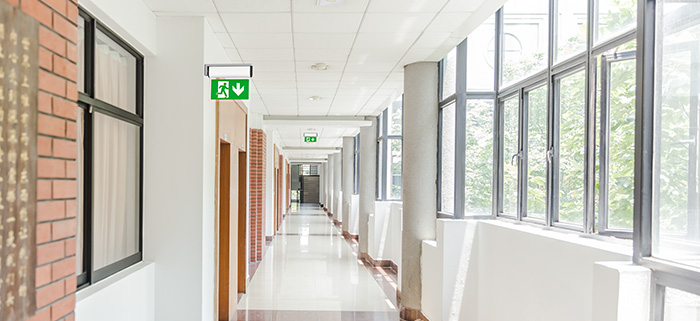
Underground and covered car parks
Lighting is required in underground and covered car parks that are 100 metres square in size or more. They must have emergency lights and this includes on stairs or along corridors leading to communal areas or the outdoors. There is generally little or no natural light in these types of facilities and, if there is a power cut, they are left in total darkness. This is why emergency illumination is an essential feature in this type of car park.
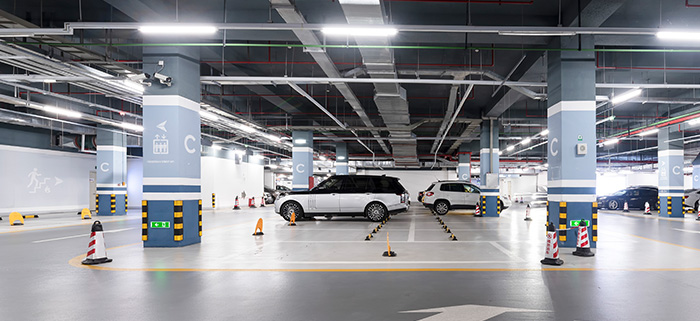
Retail premises
These types of premises, many of which also include offices, generally have a capacity for more than 100 people. Taking into account what they are used for, these premises have to meet a number of safety requirements. The regulatory requirements for illumination vary depending on capacity.
Residential buildings
Emergency illumination systems are compulsory in residential buildings according to building regulations in Spain. However, not all residential buildings have them. Given the variety of areas that need to be lit – landings, stairs, communal areas, access doors and so on – homeowner associations should address this matter.
Factories and warehouses
All industrial buildings, factories and warehouses, in particular facilities where risk-related tasks take place, must have a minimum emergency illumination of 15 lux or 10% of normal levels of light. This is calculated based on the highest values and the difference between maximum illumination and minimum illumination must be less than 10. In these cases, health and safety come first and these buildings must have luminaires that activate in emergency situations.
